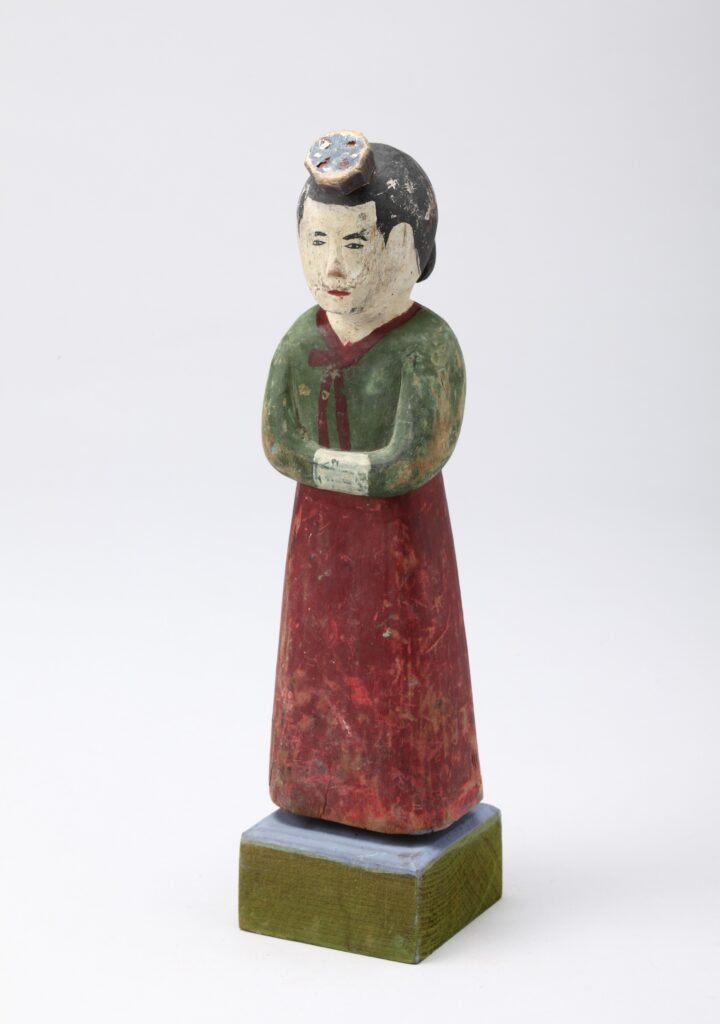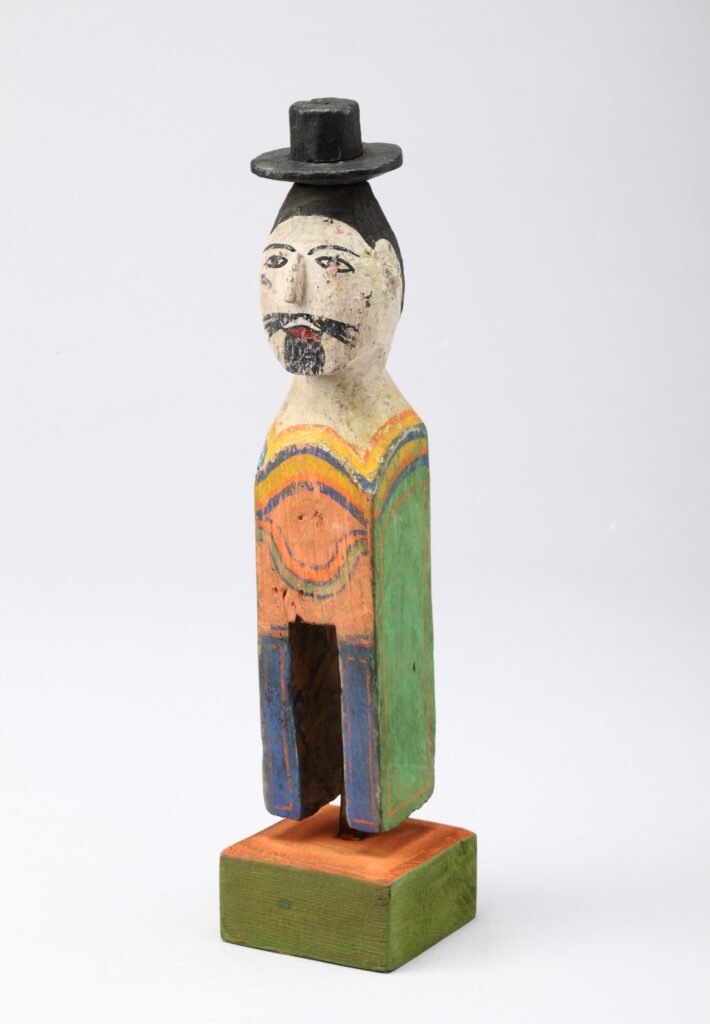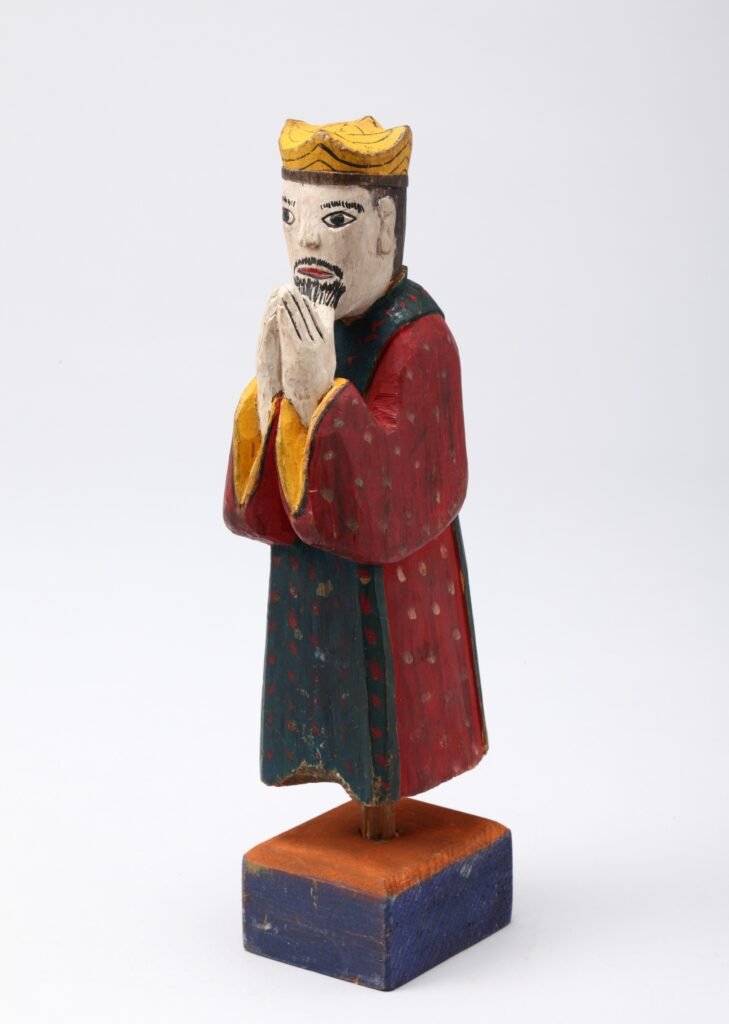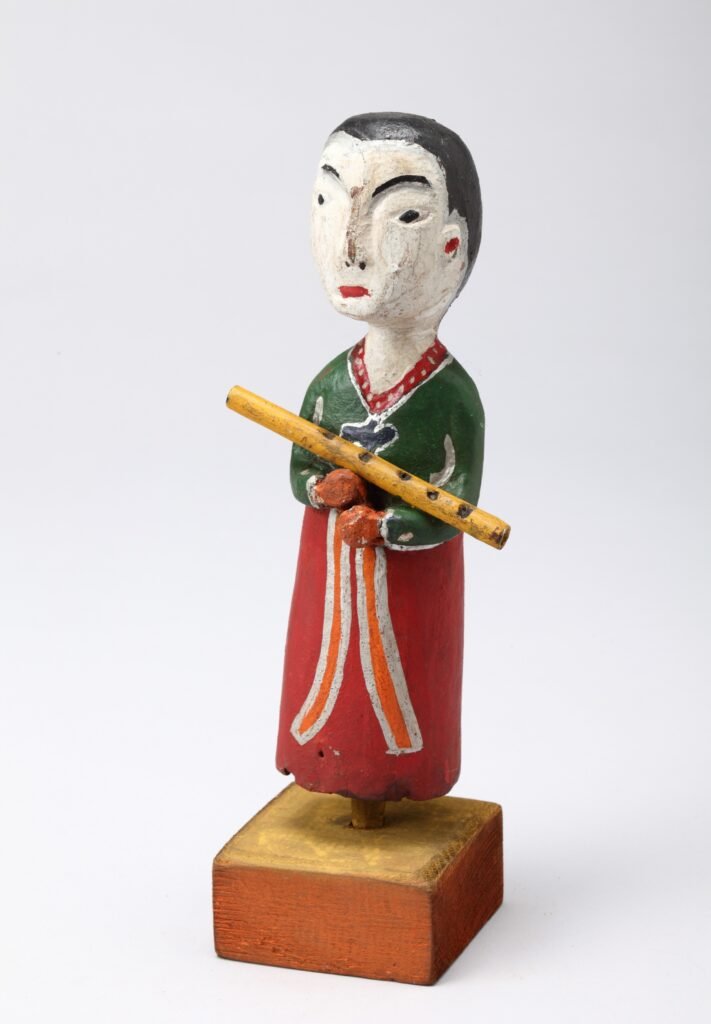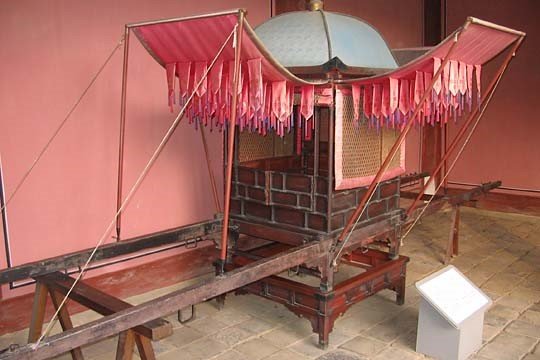This post is the first in a series of articles related to a study of the Korean people through their arts, particularly their furniture.
Most of the antique Korean furniture available today is known as “Joseon” furniture. The Joseon dynasty, also transcribed as Chosŏn or Chosun, in Korean: 대조선국, was the last dynastic kingdom of Korea, lasting for approximately five centuries. Buddhism was abolished, and strict adherence to Confucianism principles was imposed. This influence is clearly visible in Korean ancestor worship and the use of furniture for such occasions.
THE PATH TO AFTERLIFE – ANCESTOR WORSHIP
“PAN GOK” is the process of bringing back the spirit of a deceased person by carrying a small spirit bier called “YONG YEO” during the funeral to the burial site and then back home along the same route.
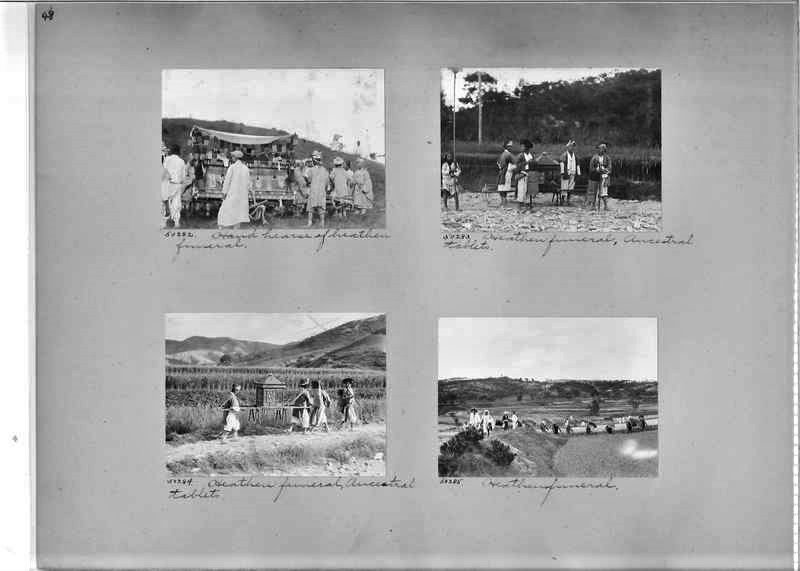
Methodist Missions in Korea between 1890 and late 1920.

at Kwangbop temple. 1880.
Photo credit: Mowry Eli
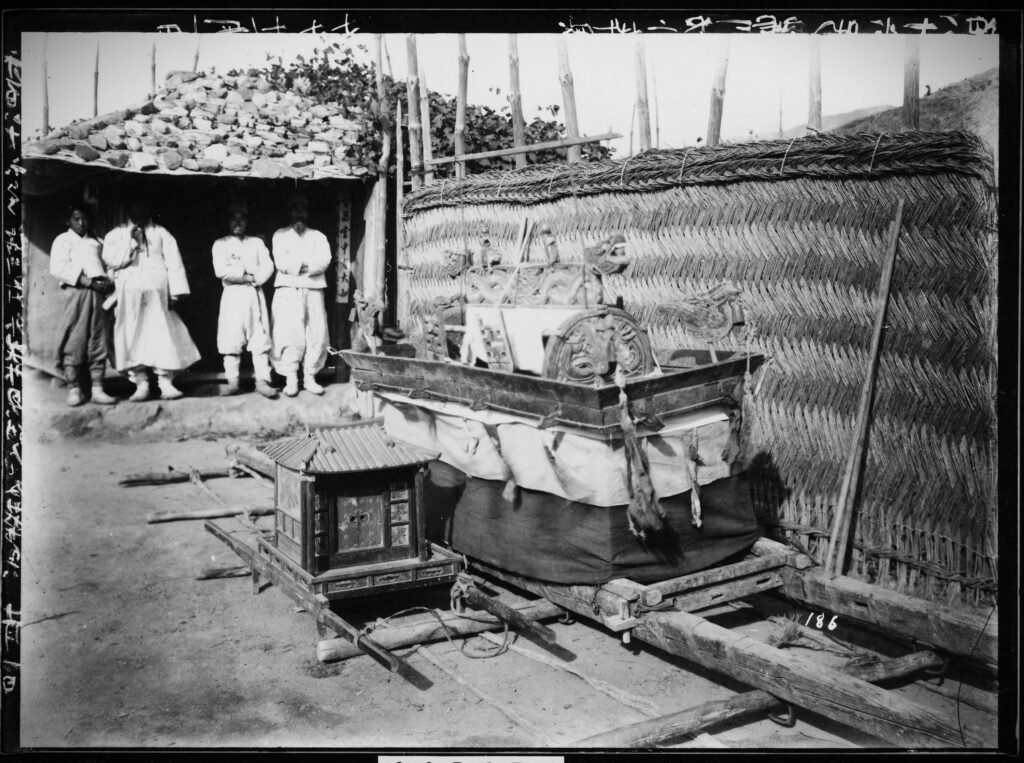

A picture illustrating a bier procession heading to a burial site.
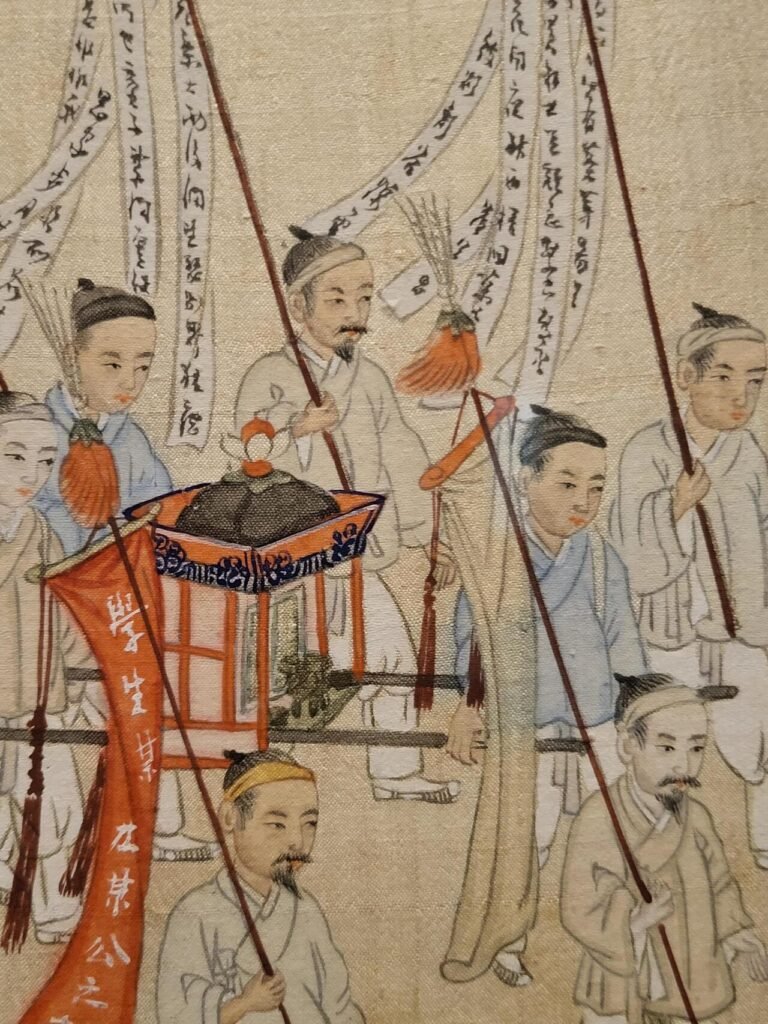

Collection: National Folk Museum of Korea, Seoul.
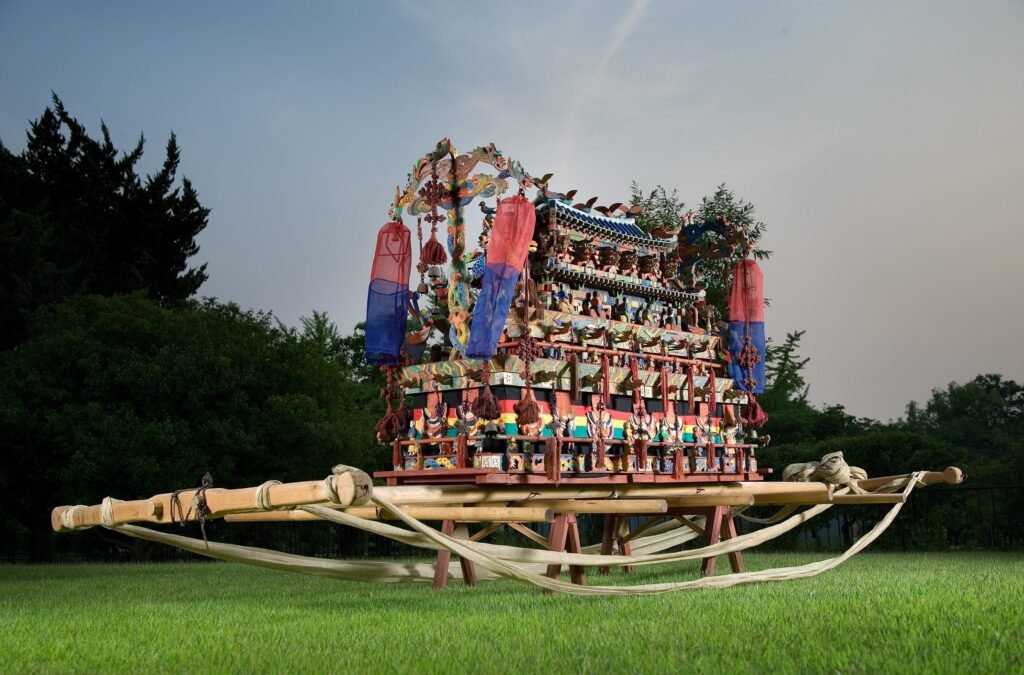

Collection: Busan Metropolitan city Museum, Korea.
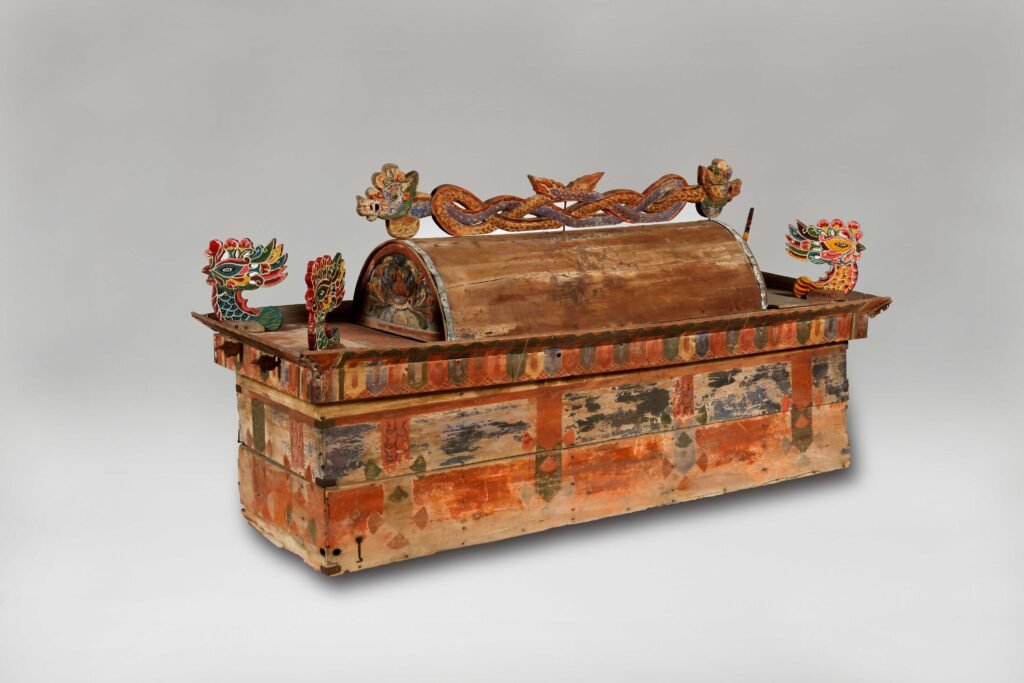
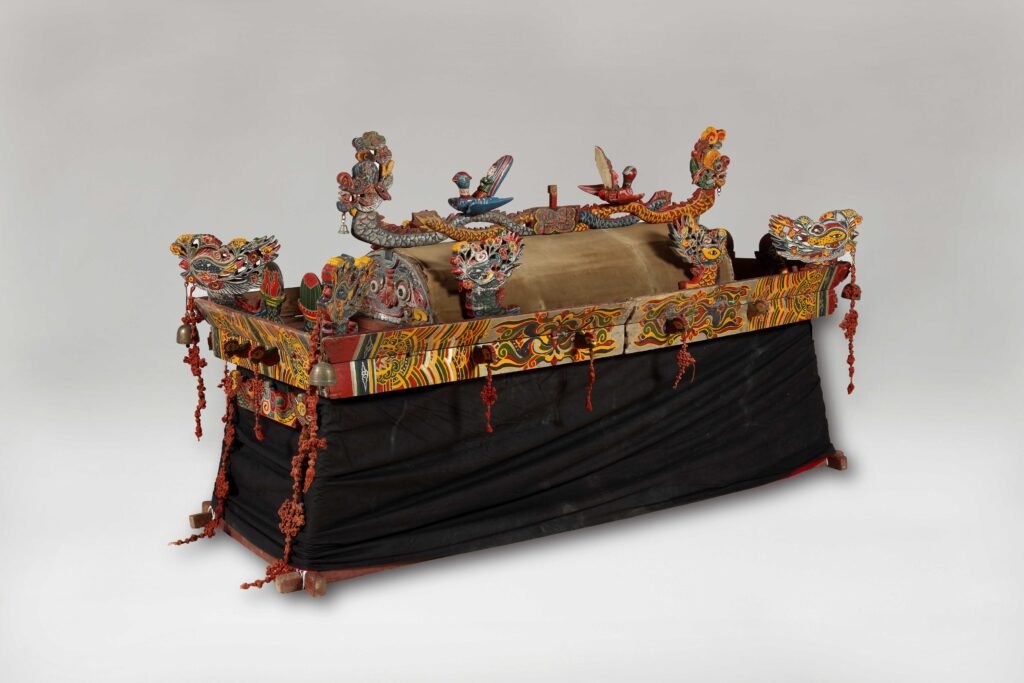
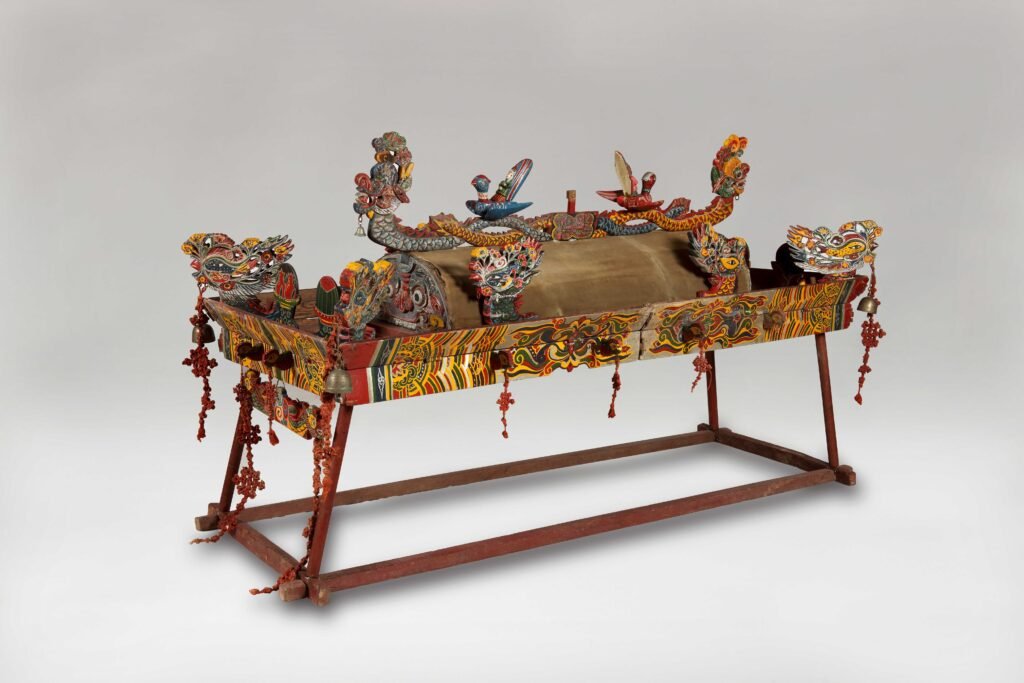
“YO YEO“, also known as “YONG YO” or “SADANG“, is the ancestor shrine or funerary sedan chair or palanquin in which the spirit of the ancestor is preserved. Most of these shrines have now vanished.
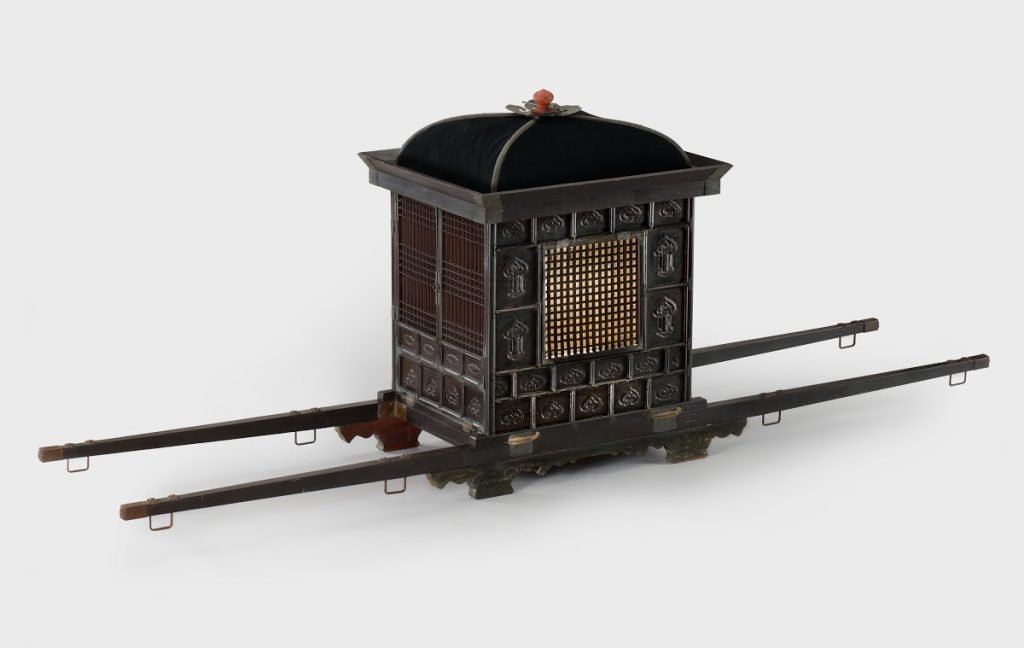

Korean ancestor shrine. Paulownia wood. Small double doors on the front and on each side. Carved flower motif in the front & a Taoist T’aeguk motif on the back. Kyonggi province. Korea.
Mid 19th century.
H. 58cm, W. 54cm, D. 60cm. Collection “ANTIKASIA”.
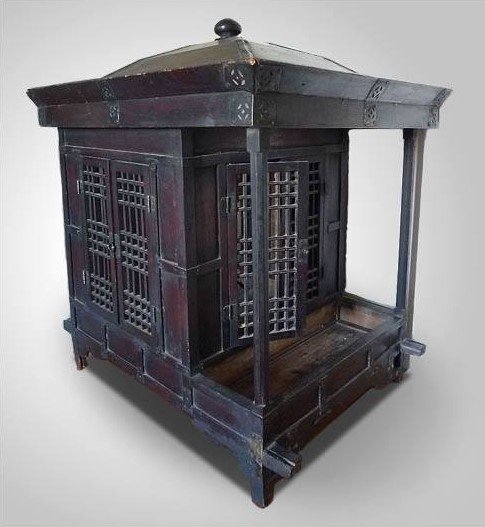
Ancestor shrine
Dark stain on pine wood. Kyonggi province. Korea.
Late 19th century.
H. 85cm, W. 65cm, D. 80cm. Collection “ANTIKASIA”.
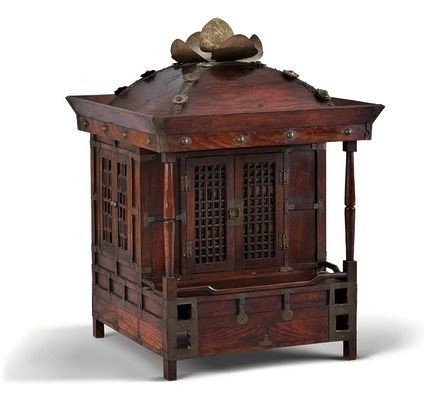
Wood (elm) and paper.
Late 19th century.
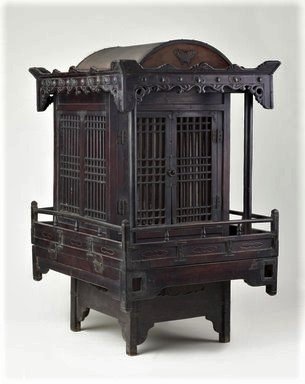
Funerary sedan chair. Wood and paper.
19th century. Collection of the Brooklyn Museum. USA
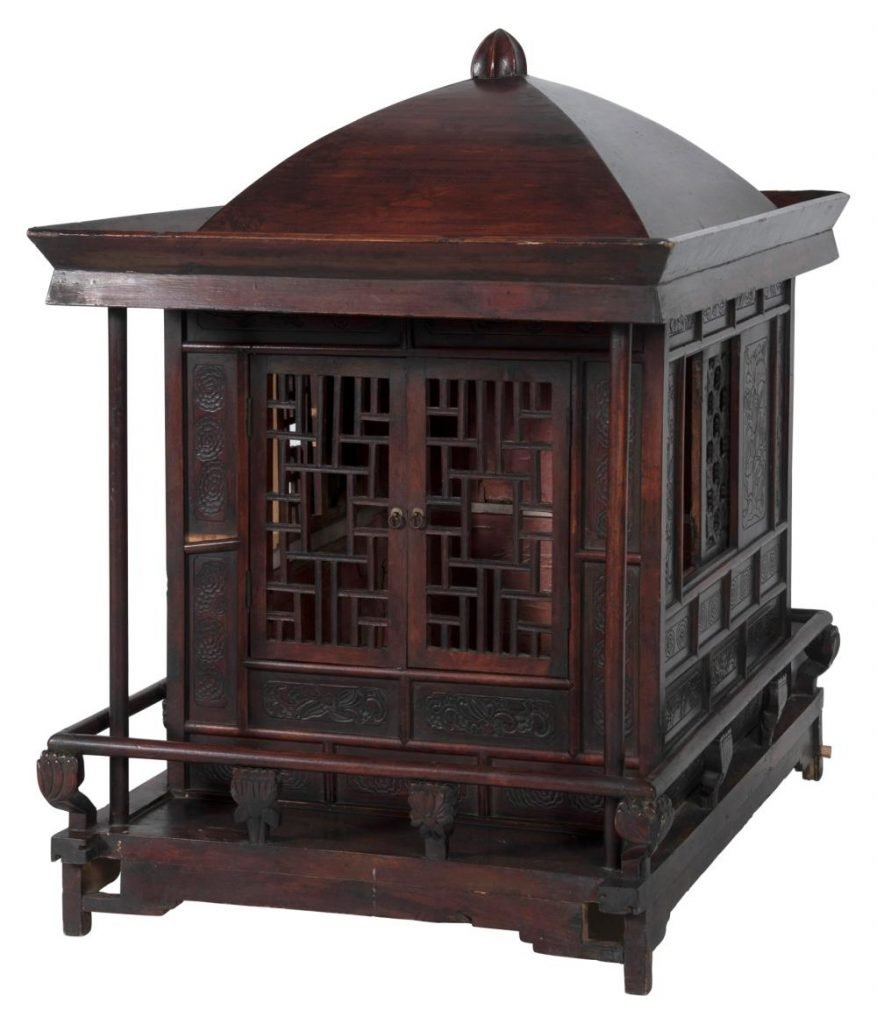
19th/20th Century
The square-form structure with overhanging domed roof and surrounding gallery. Height 34 inches, width 28 inches..
Auction: Doyle New YORK. November 22, 2022.
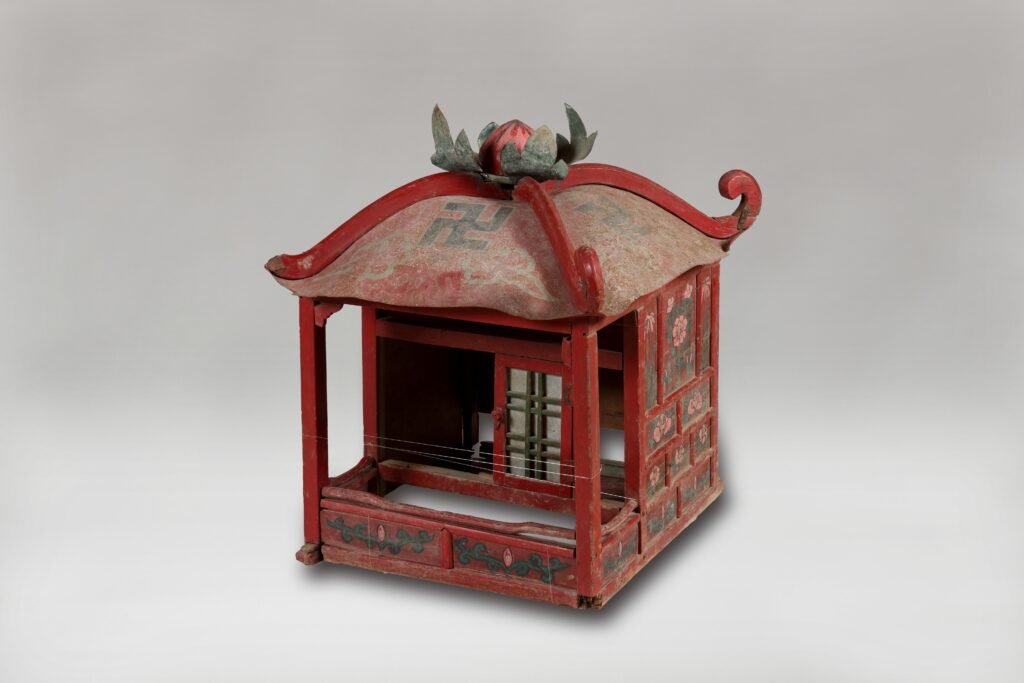
H. 78cm, W. 64,5cm, D. 72cm. Japanese occupation. early 20th century.
Collection: Busan Metropolitan City Museum, Korea.

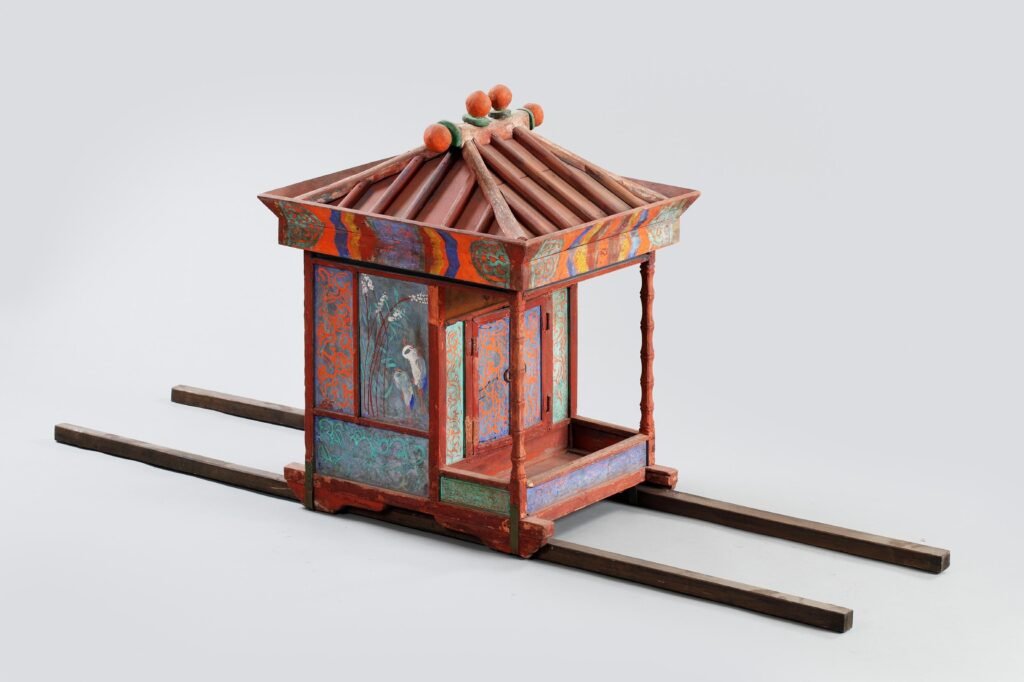
H. 81,5cm, W. 47,2cm, D. 63,8cm.
Collection: Andong City Folk Museum, Korea.
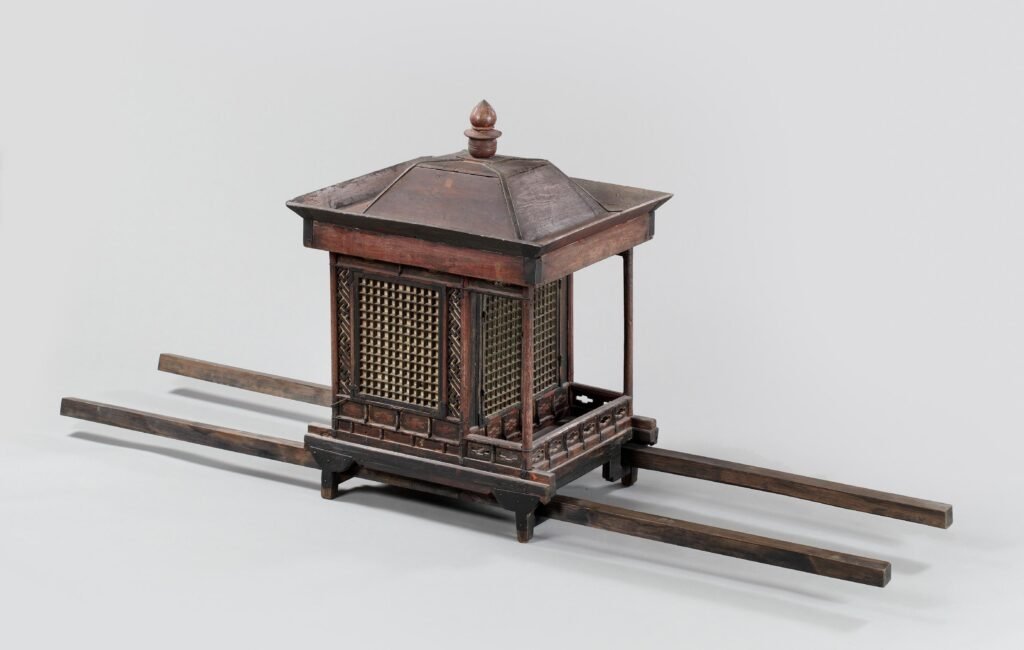
H. 90,7cm, W. 63,5cm, D. 68cm.
Collection: Andong City Folk Museum, Korea.
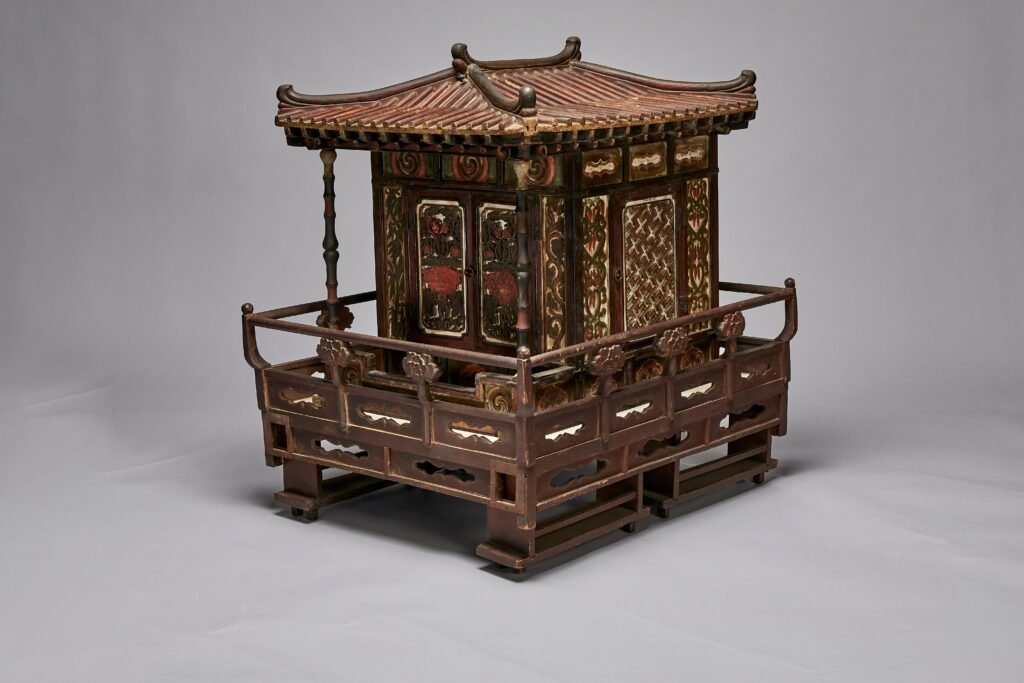
Collection: NAMGARAM MUSEUM. Jinju-si, Gyeongsangnam-do

Collection: NAMGARAM MUSEUM. Jinju-si, Gyeongsangnam-do
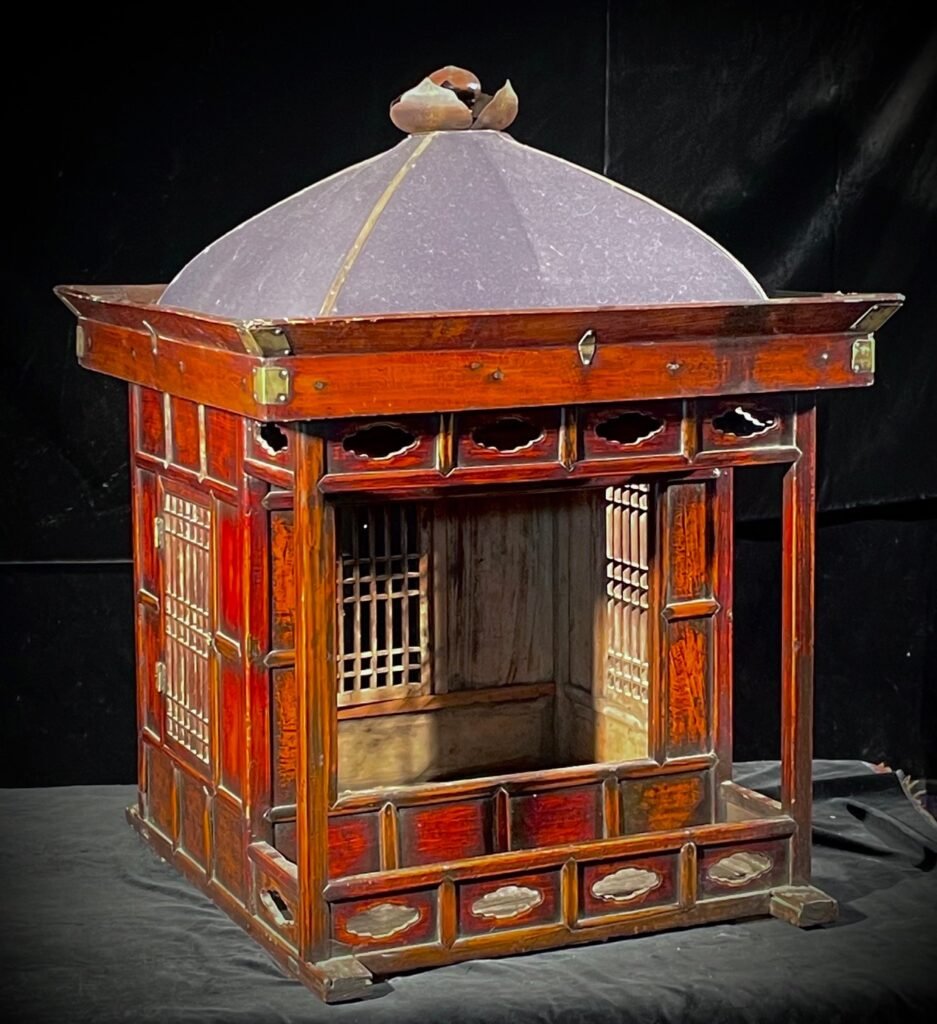
Funerary sedan chair. H. 93cm, W. 72cm, D. 72cm.
Private collection.
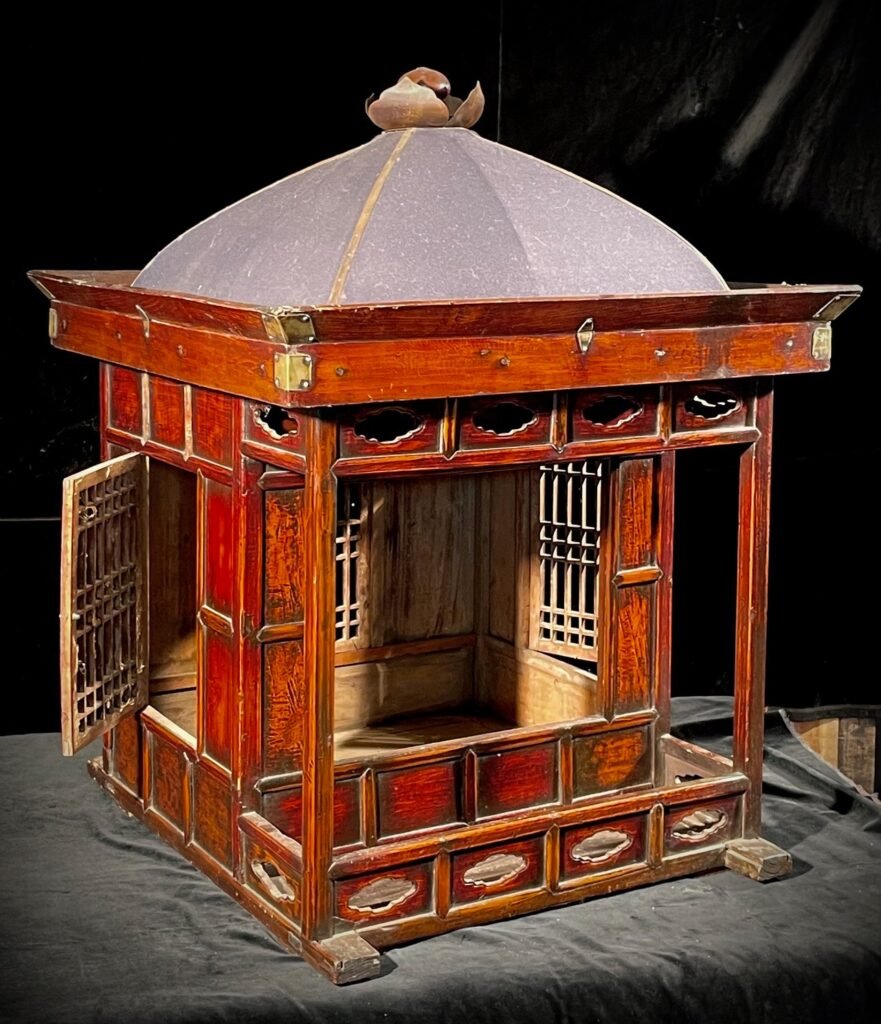
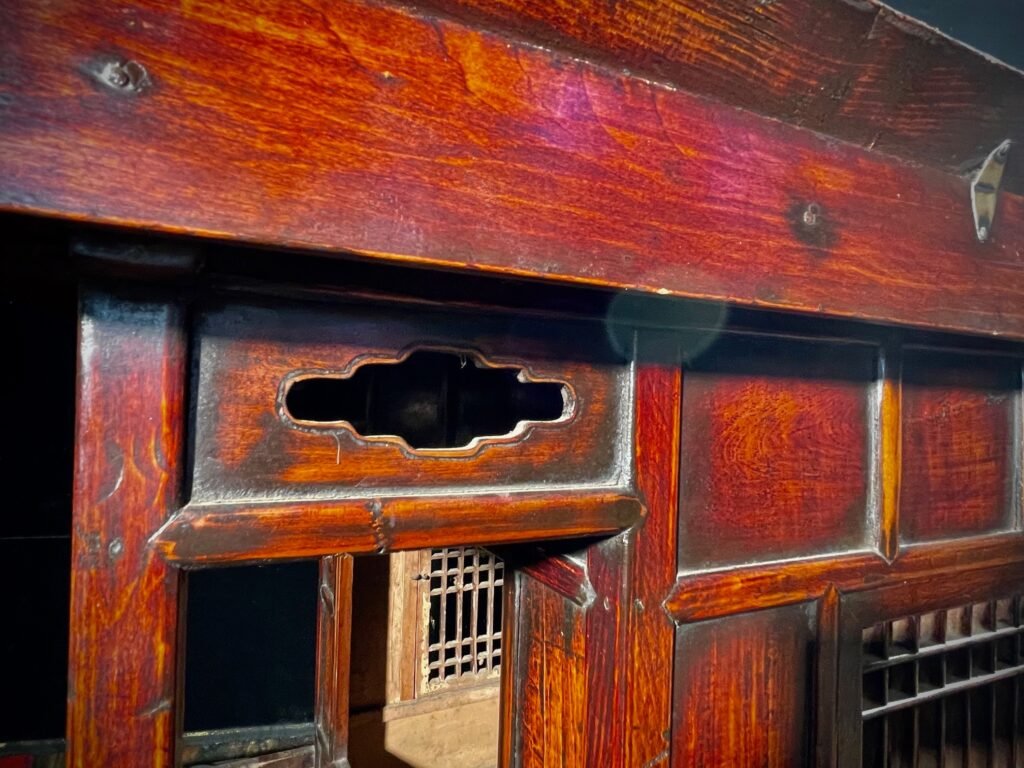
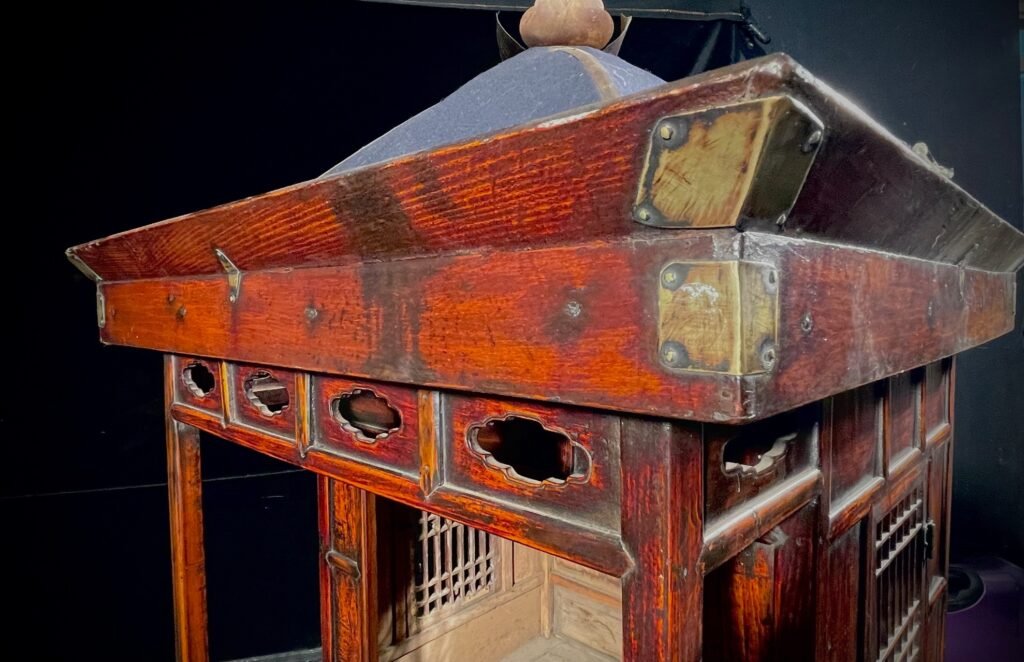
After the “TAESANG” ceremony, which occurs 2 years after the death, the mourning shrine is dismantled, and the mortuary tablet is transferred to the family shrine known as “Gamsil“, which houses the mortuary tablets of ancestors from previous generations.
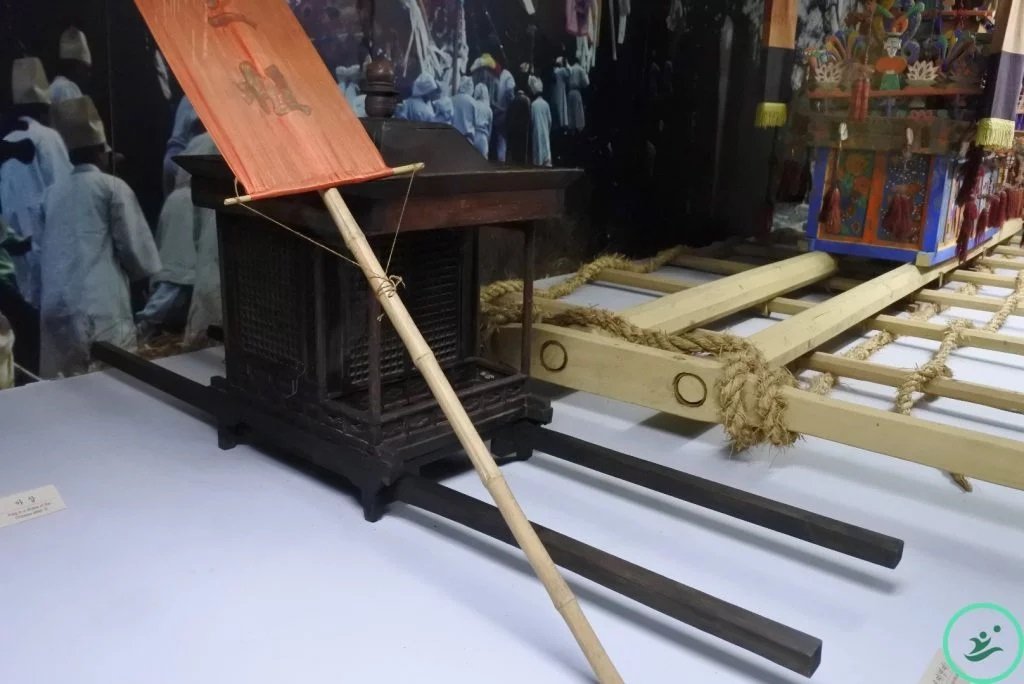
The Andong Folk Museum. Taegu. This miniature sedan shrine had long poles running through the holes in the base so it could be carried on the shoulders of men. It mimics the style and shape of palanquins used for transport of aristocratic women, but its small size indicates that it was used in funeral processions.
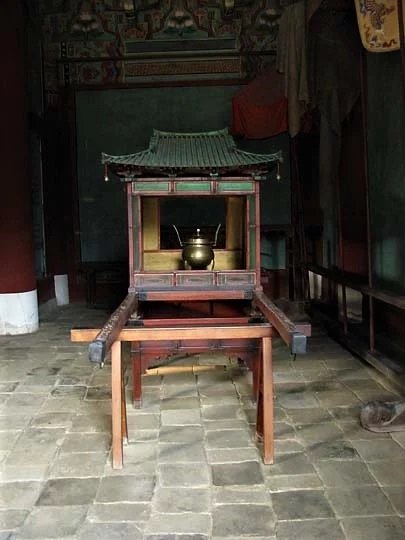
Jogyeongmyo Shrine. Jeonggak.
It would have held an inscribed tablet believed to represent the spirit of the deceased. The tablet accompanied the coffin to the burial site, then was taken back to the family home, where it was installed and worshipped regularly by surviving family members. As funeral rites became simpler in modern times, these miniature palanquins fell out of favor.
Today, “Yong Yo” is extremely rare and is no longer in use.
Traditional funerals in rural Korea were quite distinct from what you see today; they were more like ceremonies. There were two primary biers: the coffin bier, known as “SANG YEO“, and the soul bier, “YO YEO“. It is assumed that these came in different sizes and styles depending on the person’s social status and wealth.
“Gamsil“, also called “Shinjujang“, is a place where the spirits of ancestors are enshrined. Many of them are designed in the shape of a house.
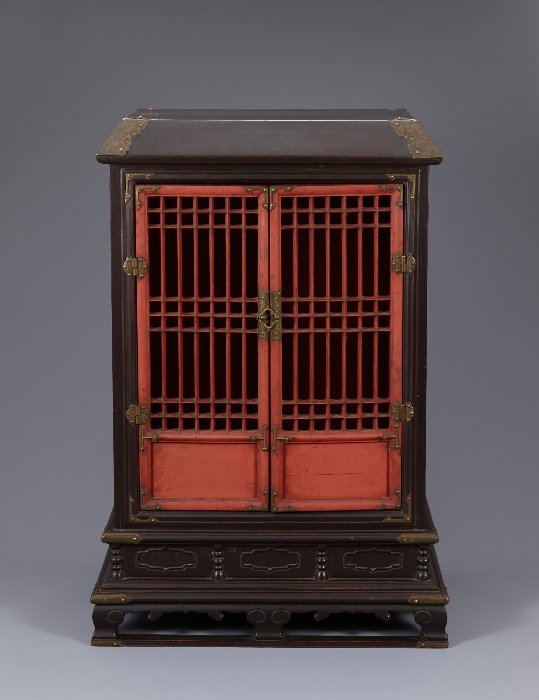
Consisting of a body a pedestal and a roof, this tabernacle has two compartments inside, indicating that two spirits where enshrined. Collection: National Museum of Korea, Seoul.

H. 60,8 cm, W. 55,2 cm, D. 35,8 cm.
Collection: National Museum of Korea, Seoul.

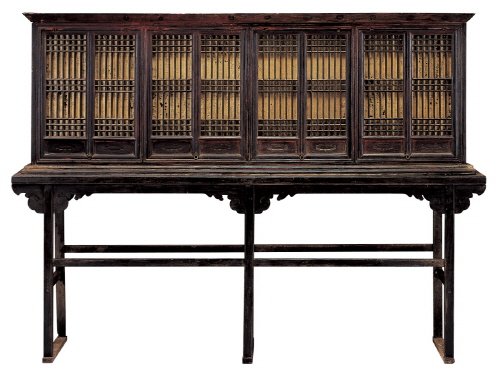
Placed on altar table for ancestor ceremony.
LEFT: H. 187cm, W. 138cm, D. 45cm.
RIGHT: H. 86cm, W. 90cm, D. 39cm.
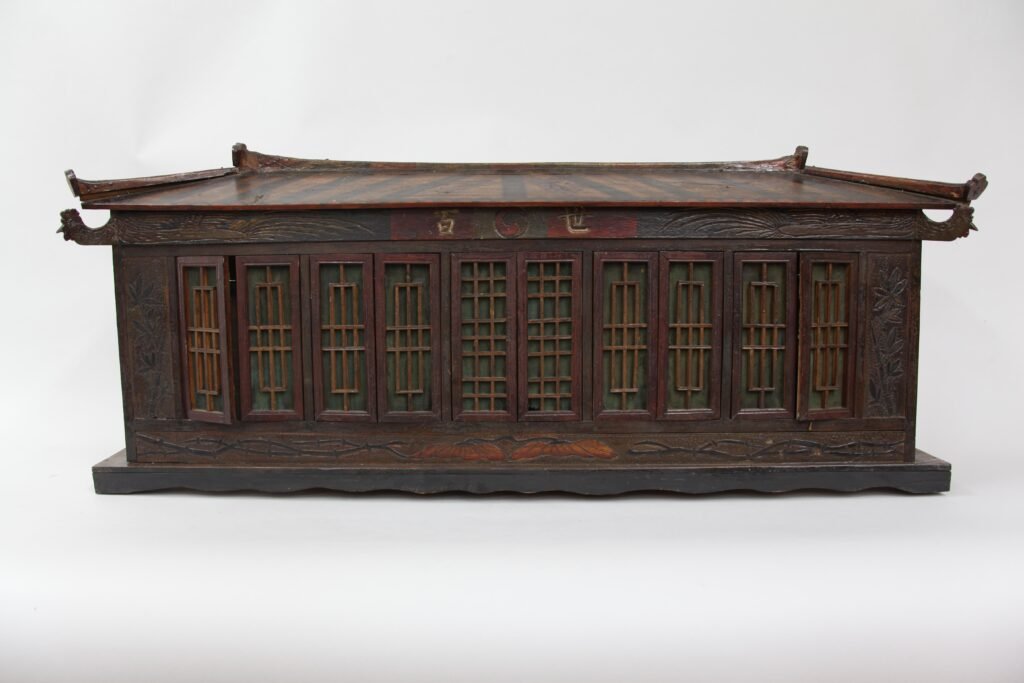
A space created to enshrine statues & tablets.
Collection: Hanbat Education Museum, Korea.
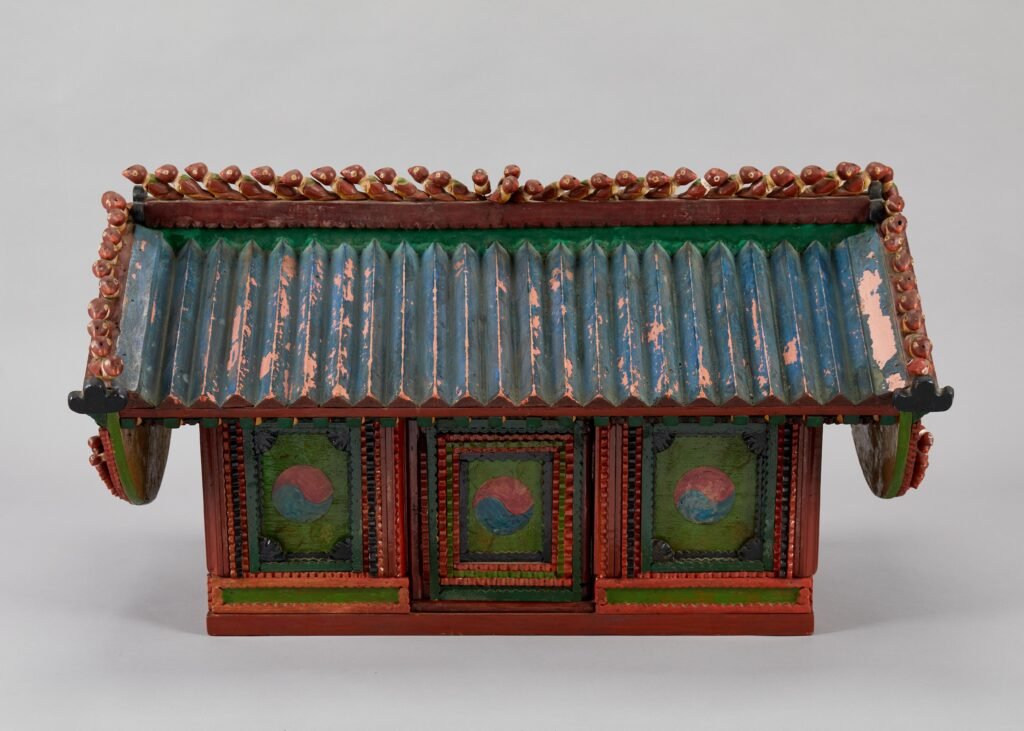
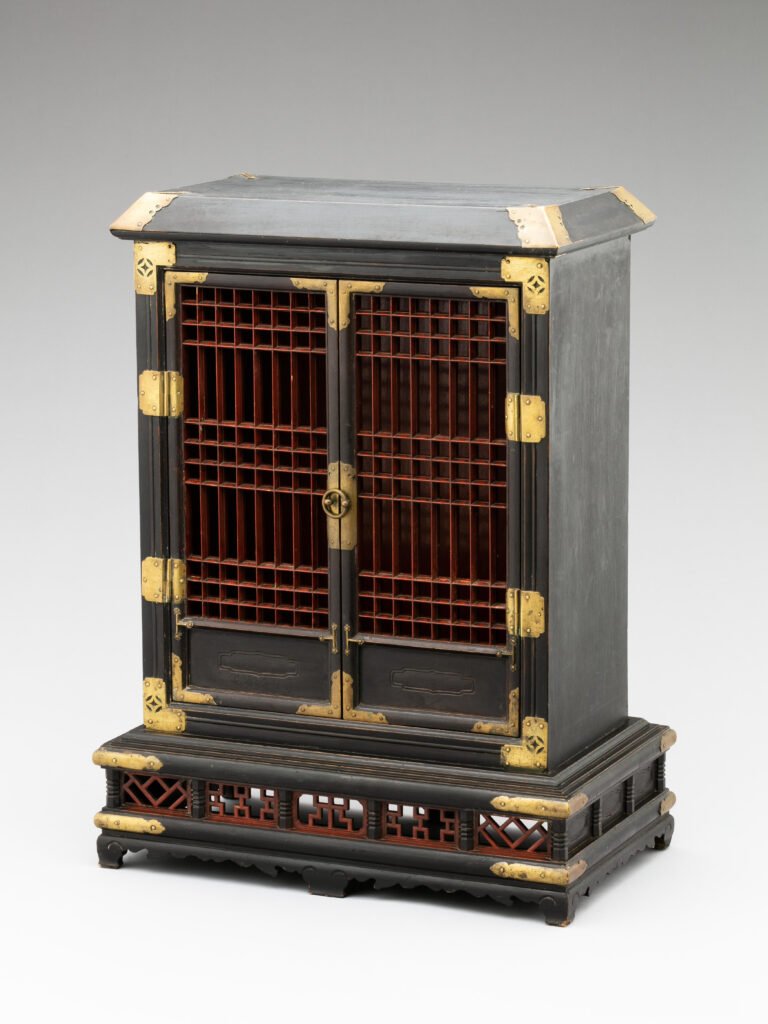
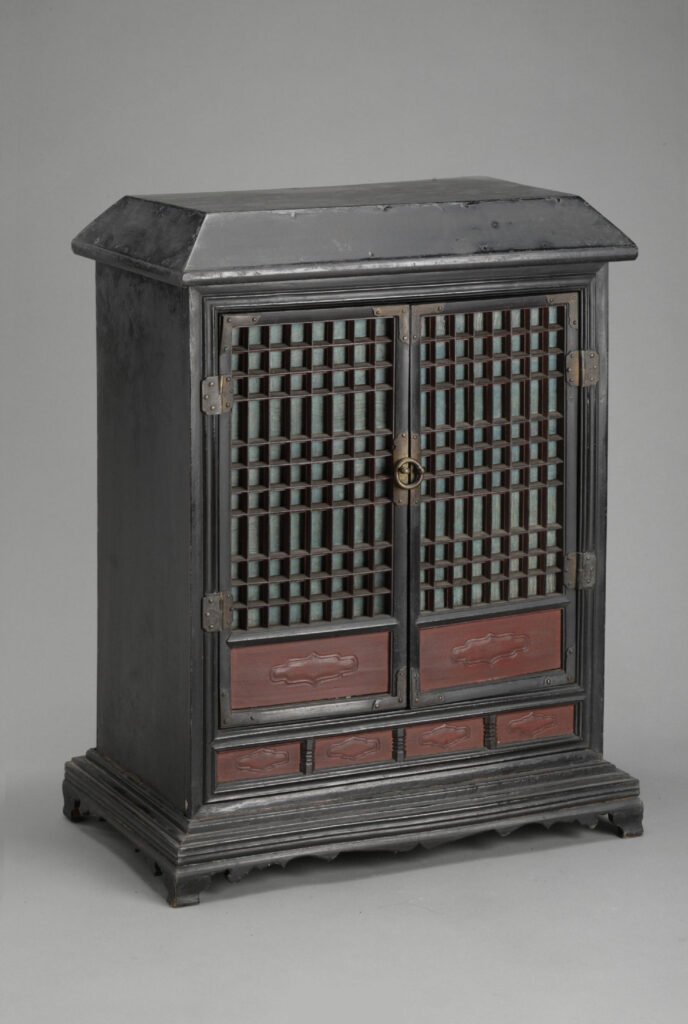
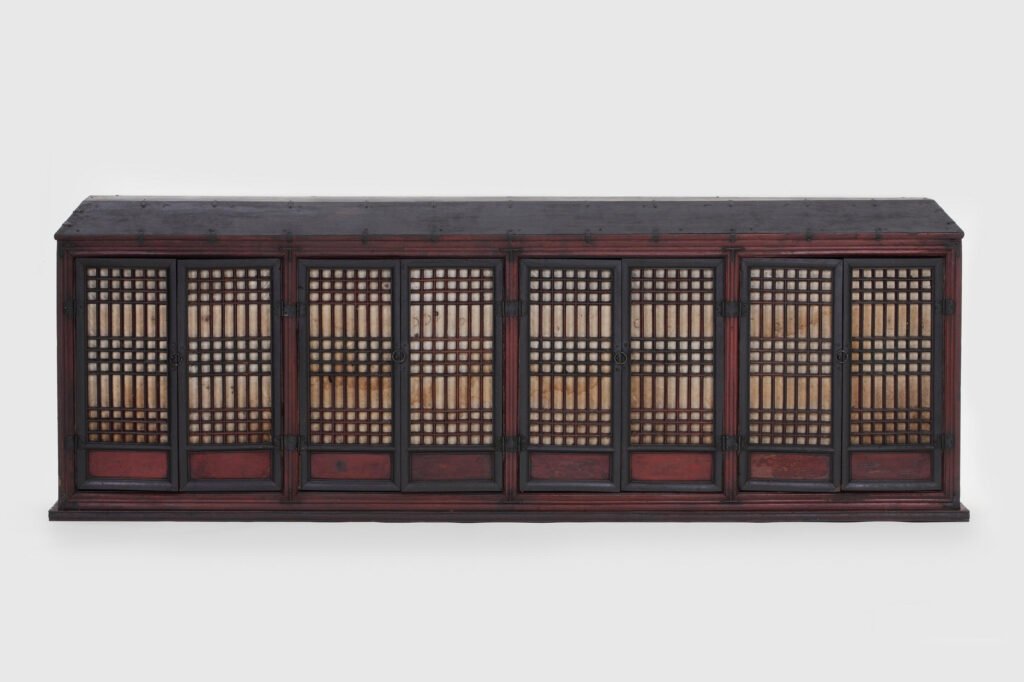
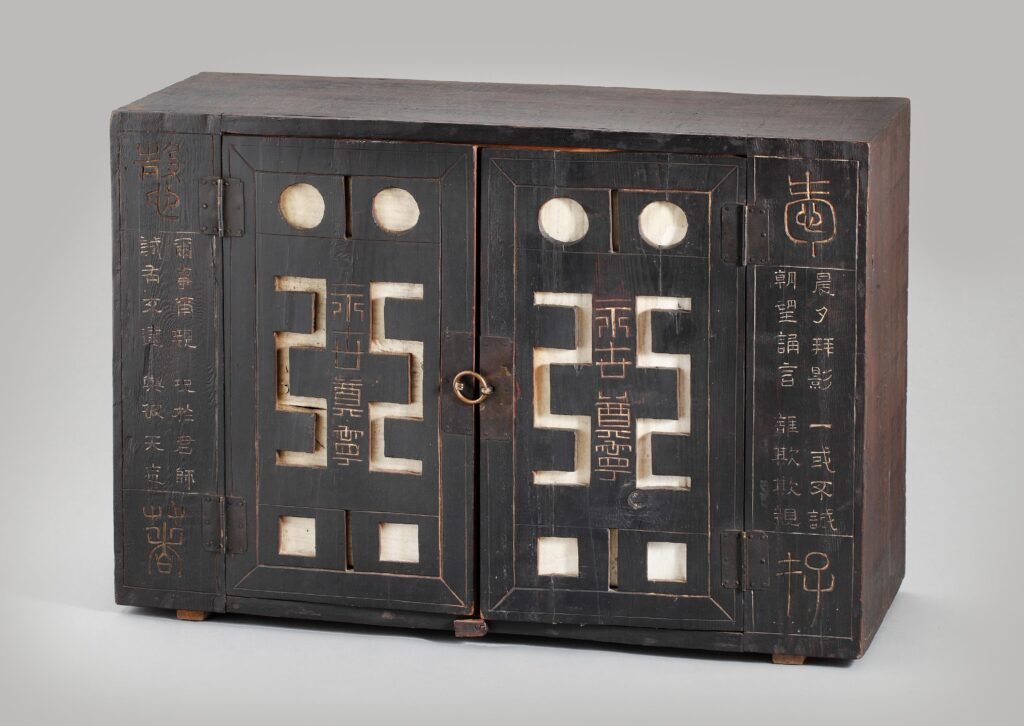
H. 49cm, W. 72cm, D. 23,5cm.
Collection: Andong City Folk Museum, Korea.
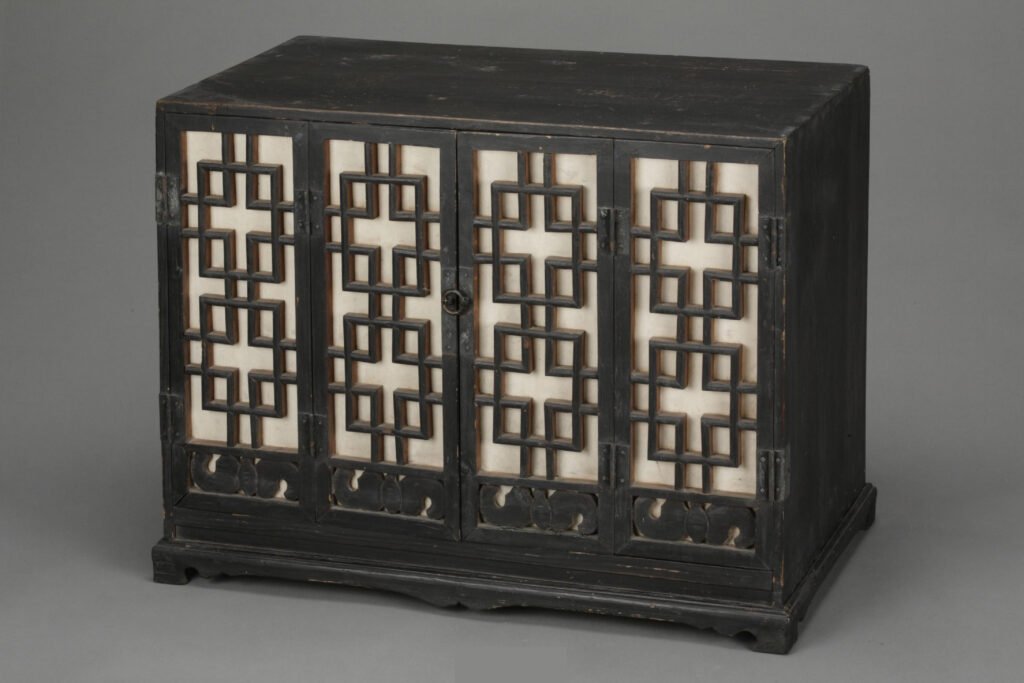

H. 54cm, W. 72cm, D. 30cm.
Collection: Jeonju University, Korea.
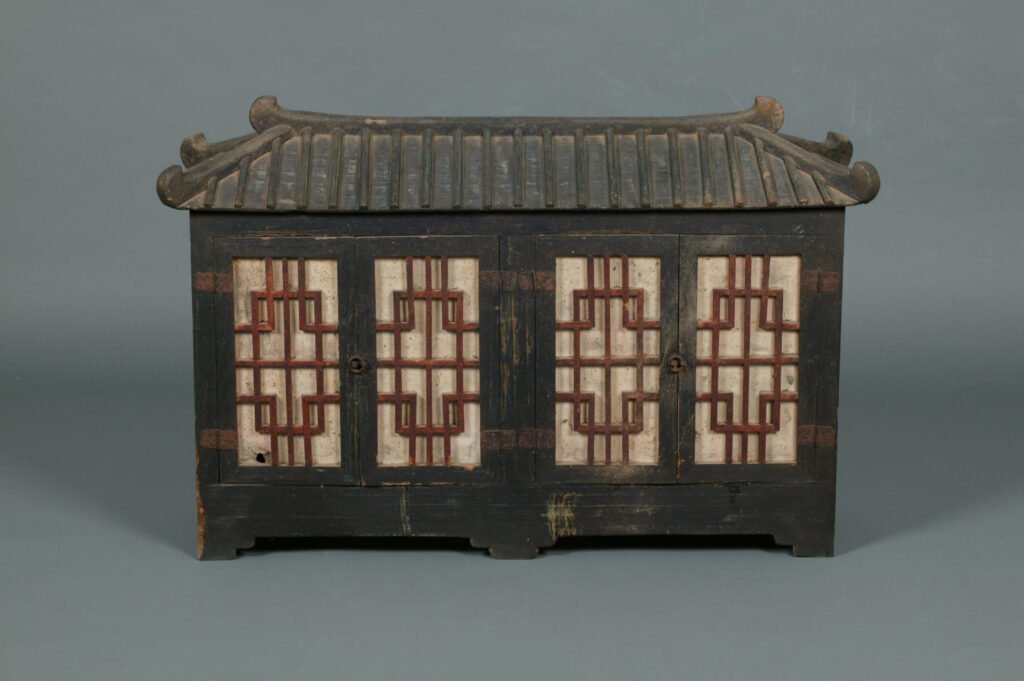
H. 56cm, W. 83cm, D. 25cm.
Collection: National Folk Museum, Seoul, Korea.
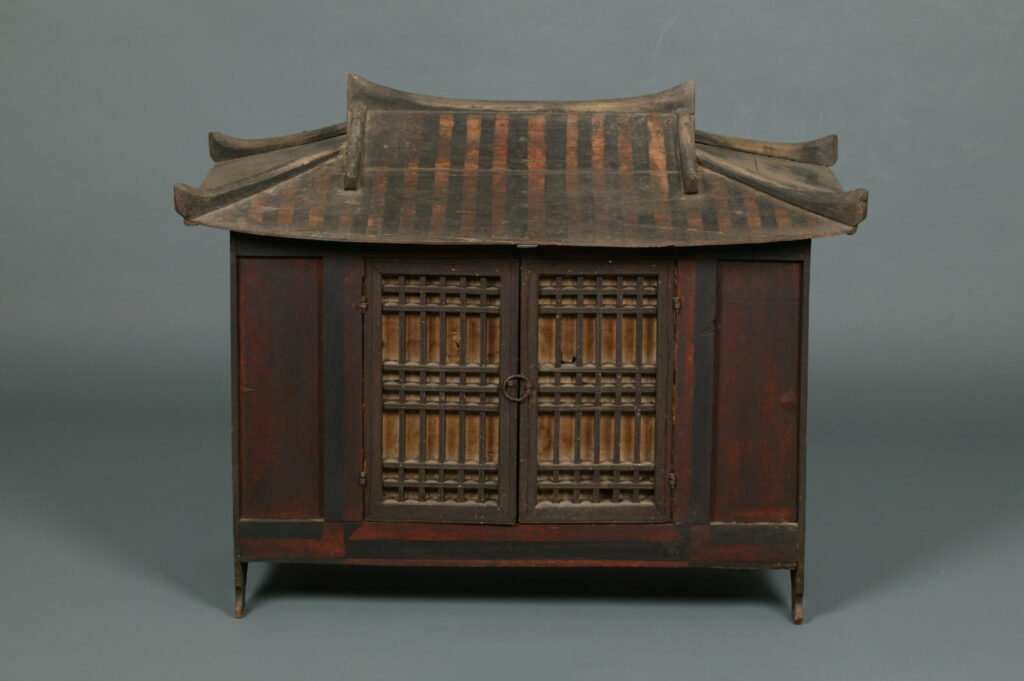
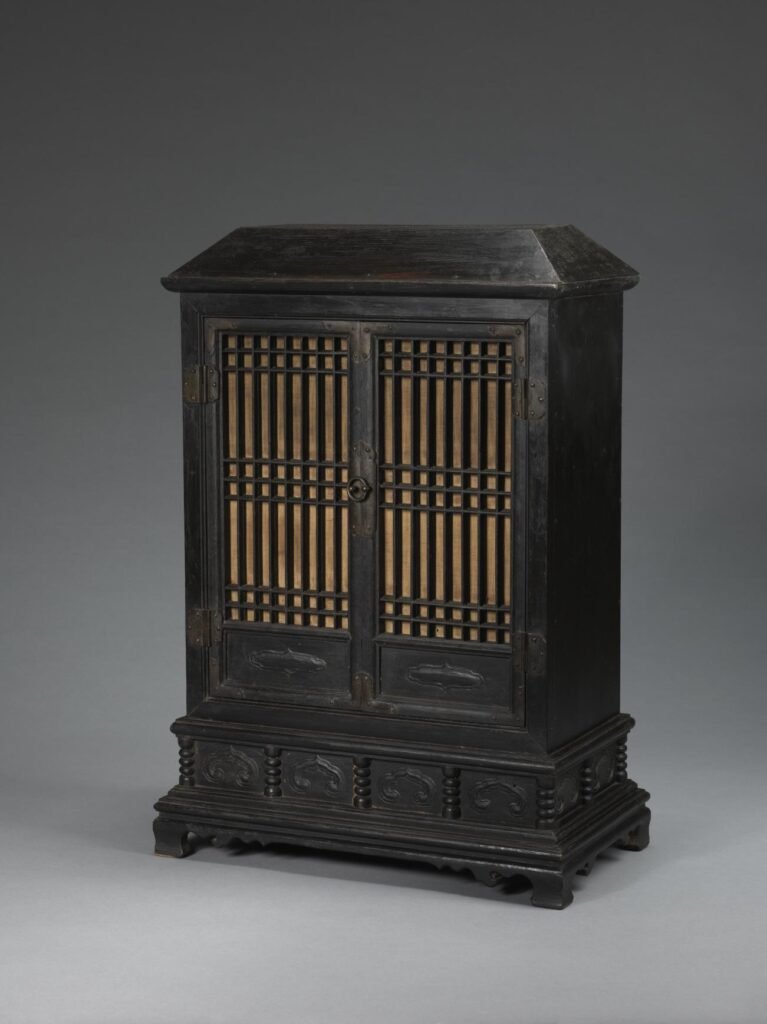
H. 60,7cm, W. 37,3cm, D. 19,3cm.
Collection: National Palace Museum, Seoul.
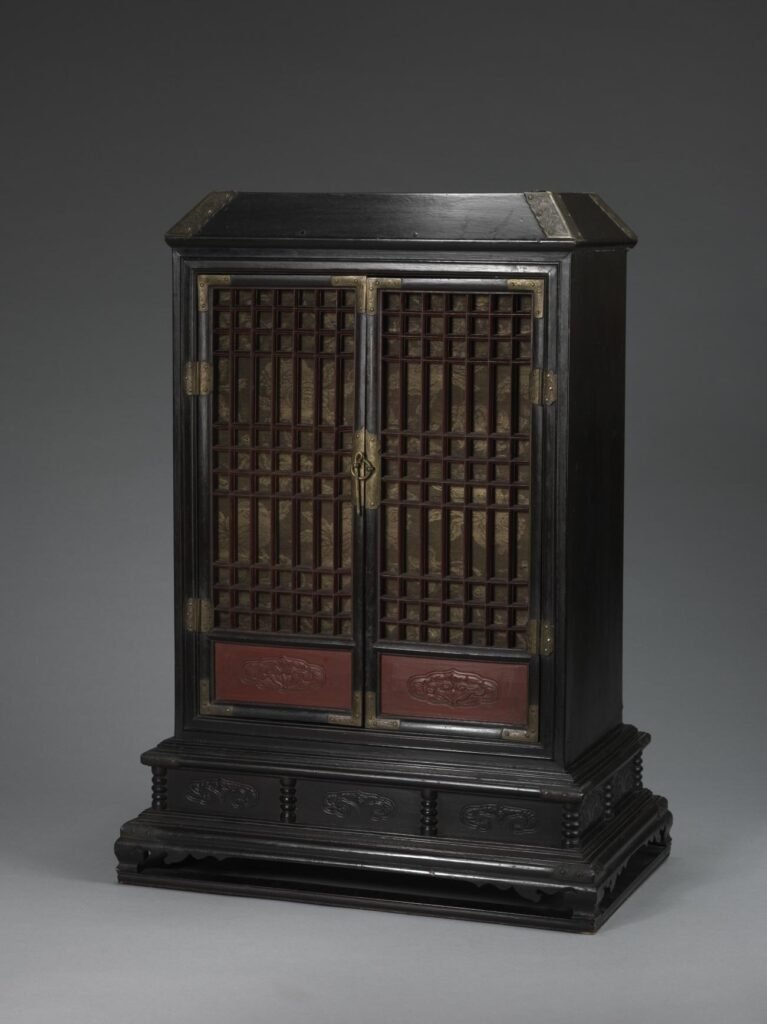
H. 72,5cm, W. 42,4cm, D. 23,5cm.
Collection: Seoul National University Museum.
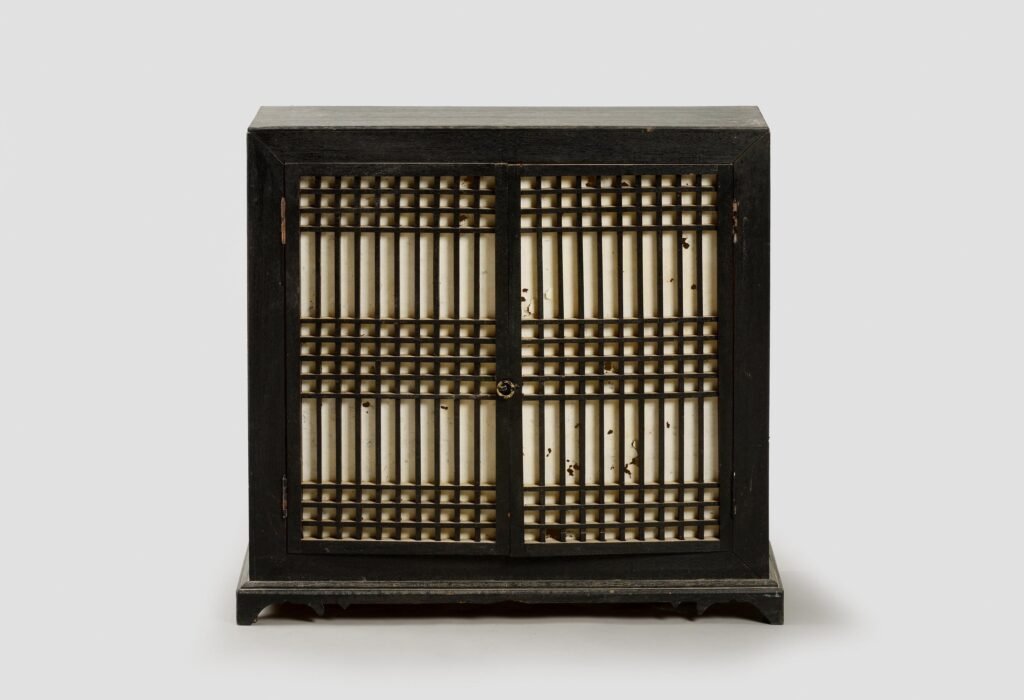
Collection: Suwon Hwaseong fortress Museum, Korea.
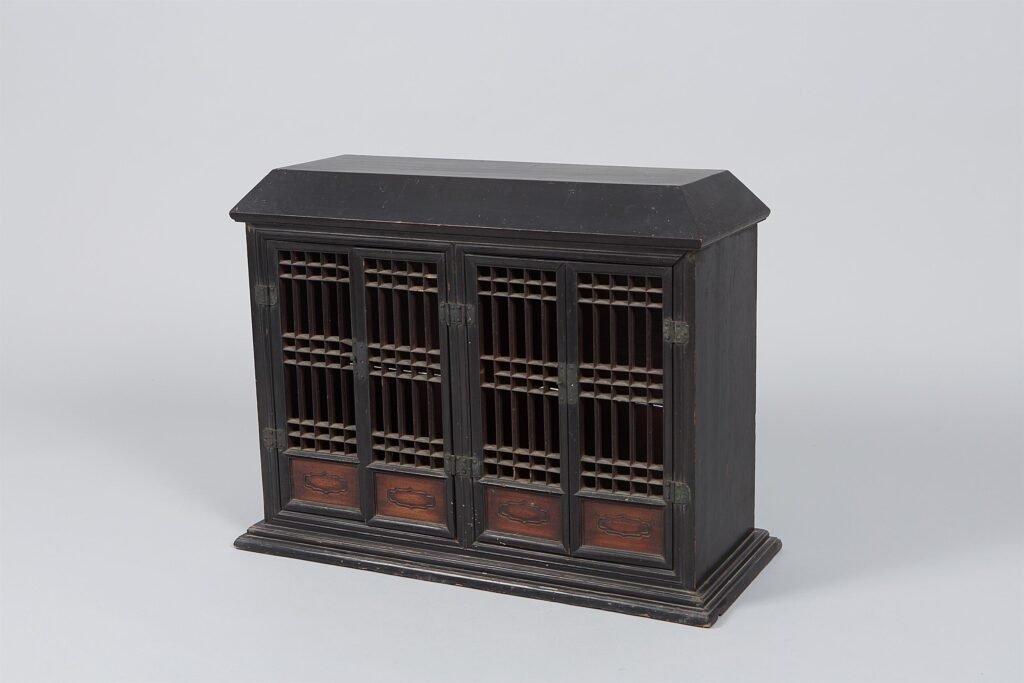
H. 54cm, W. 72cm, D. 30cm.
Collection: Jeonju University, Korea.
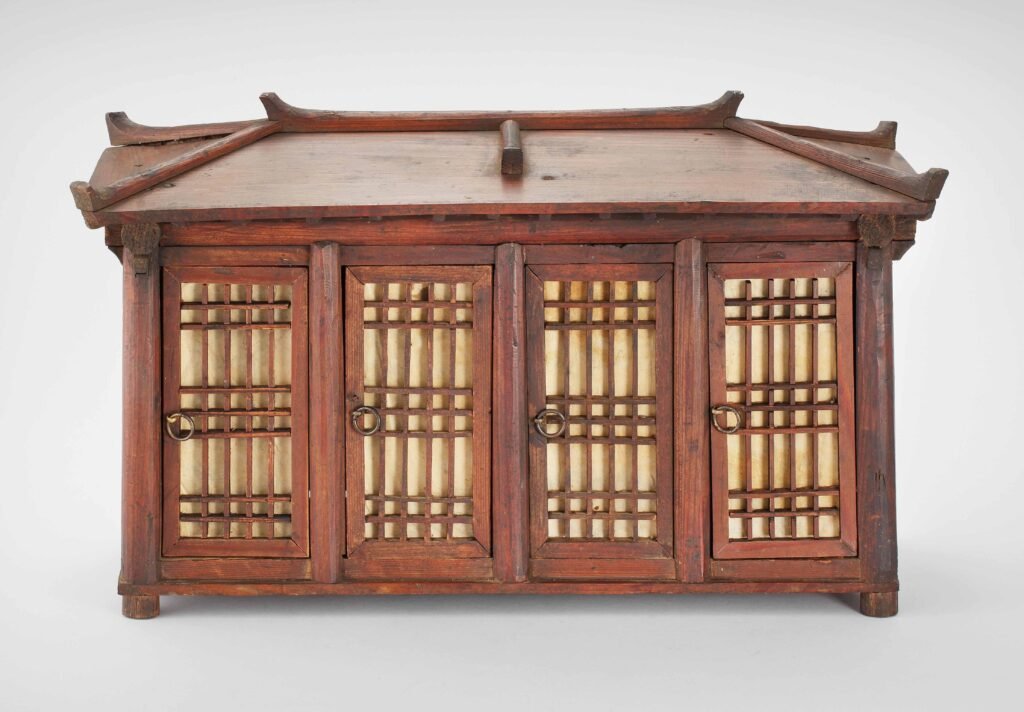
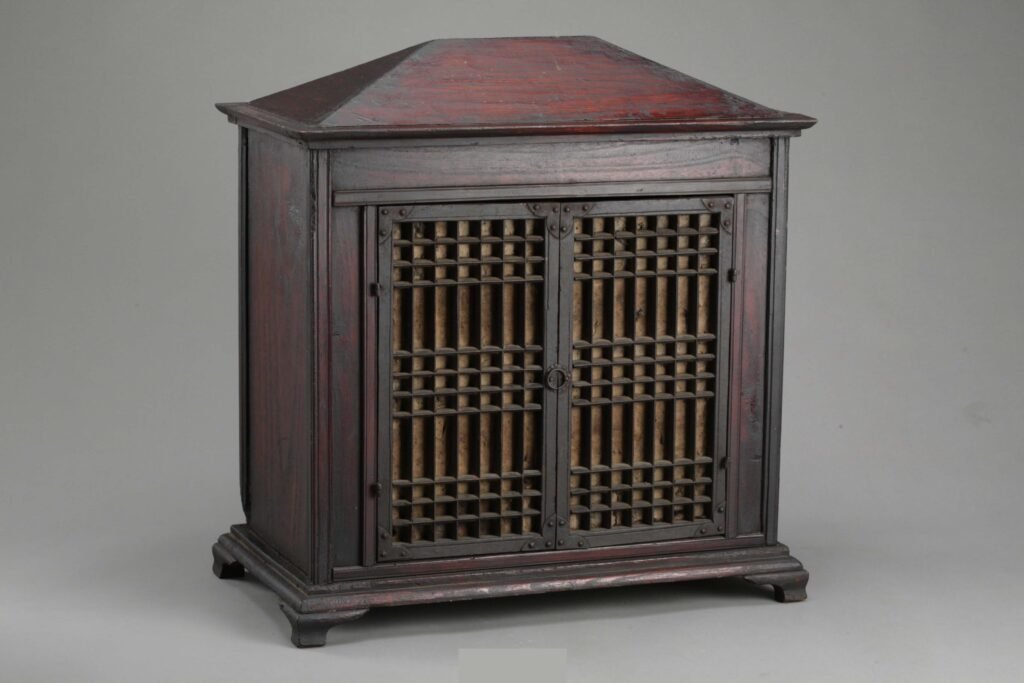
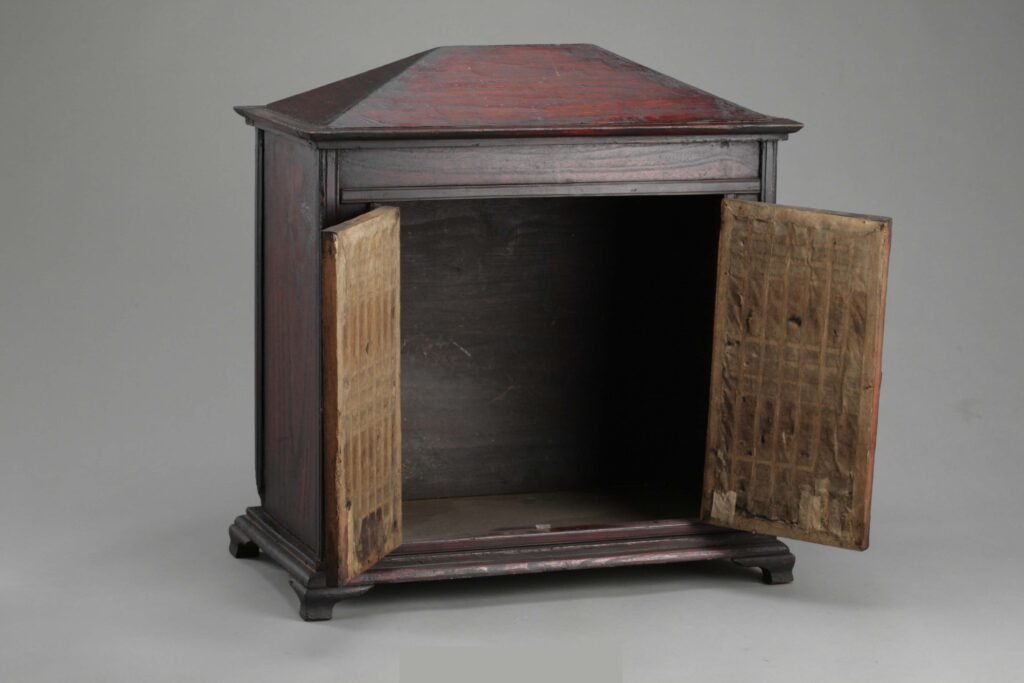
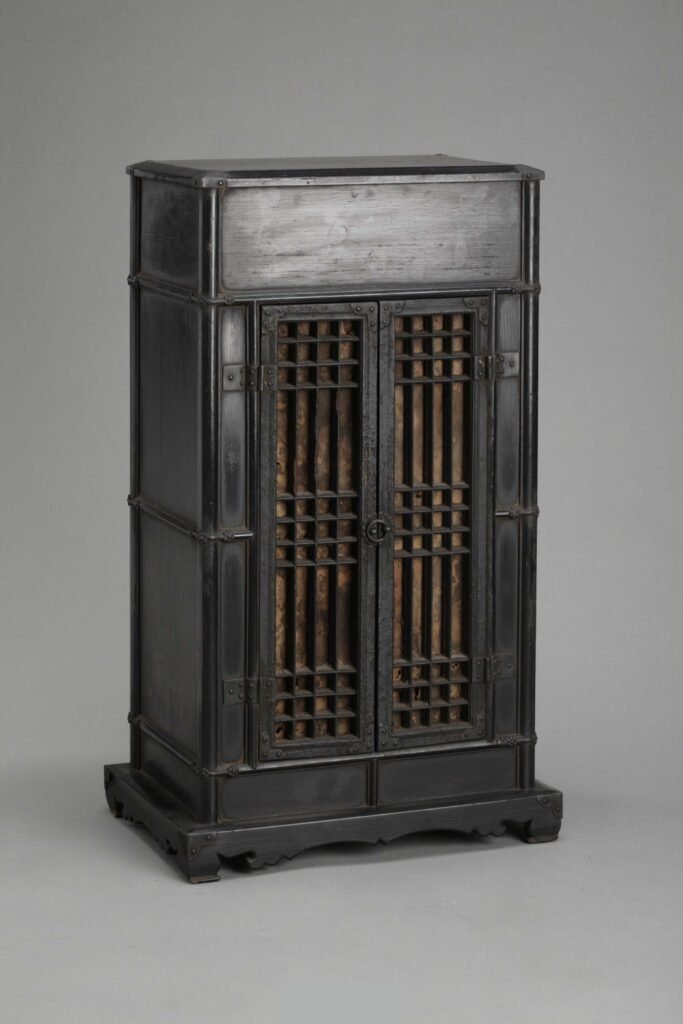
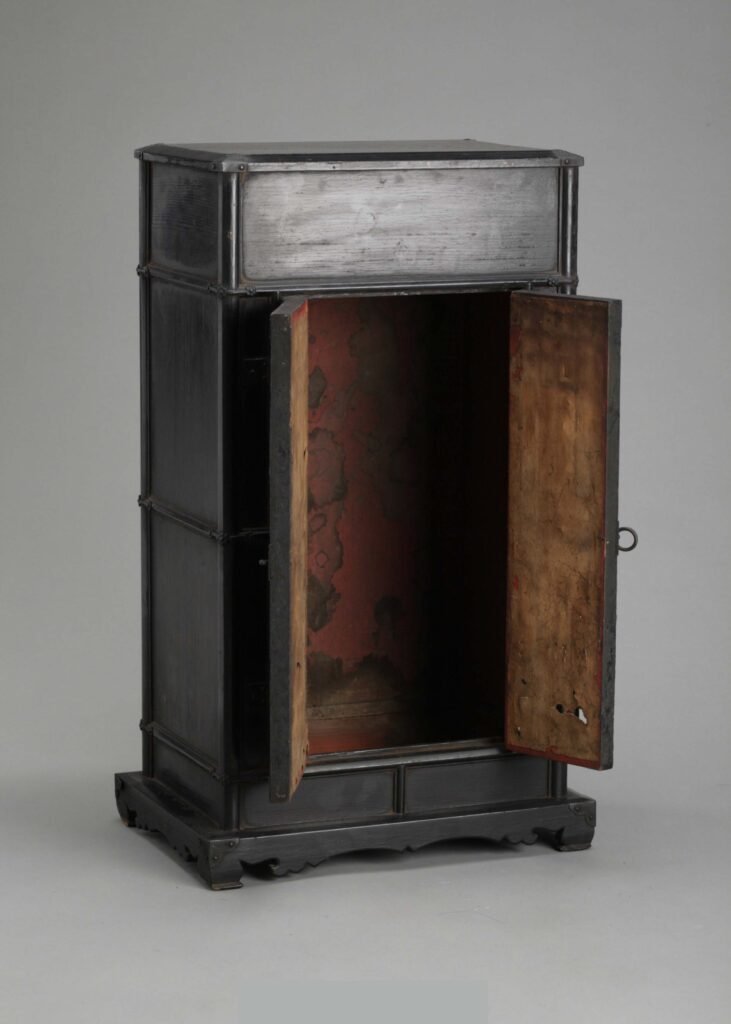
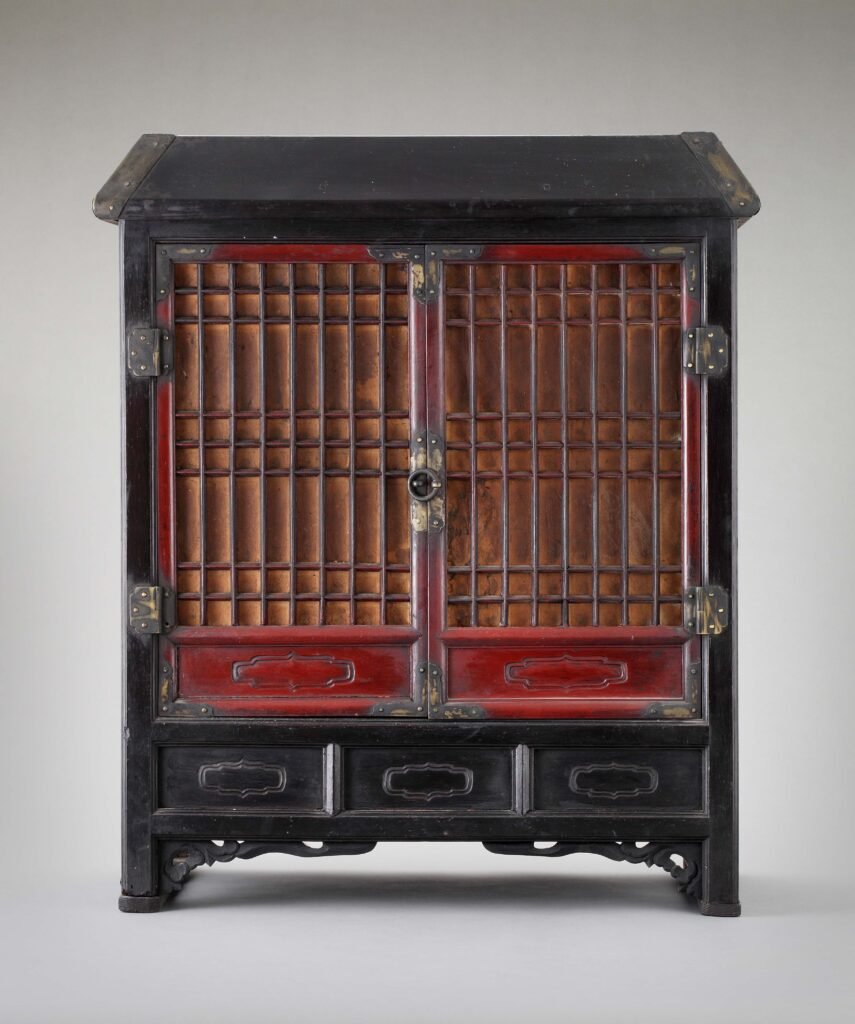
H. 61,1cm, W. 51cm, D. 33,9cm.
Collection: Andong City Folk Museum.
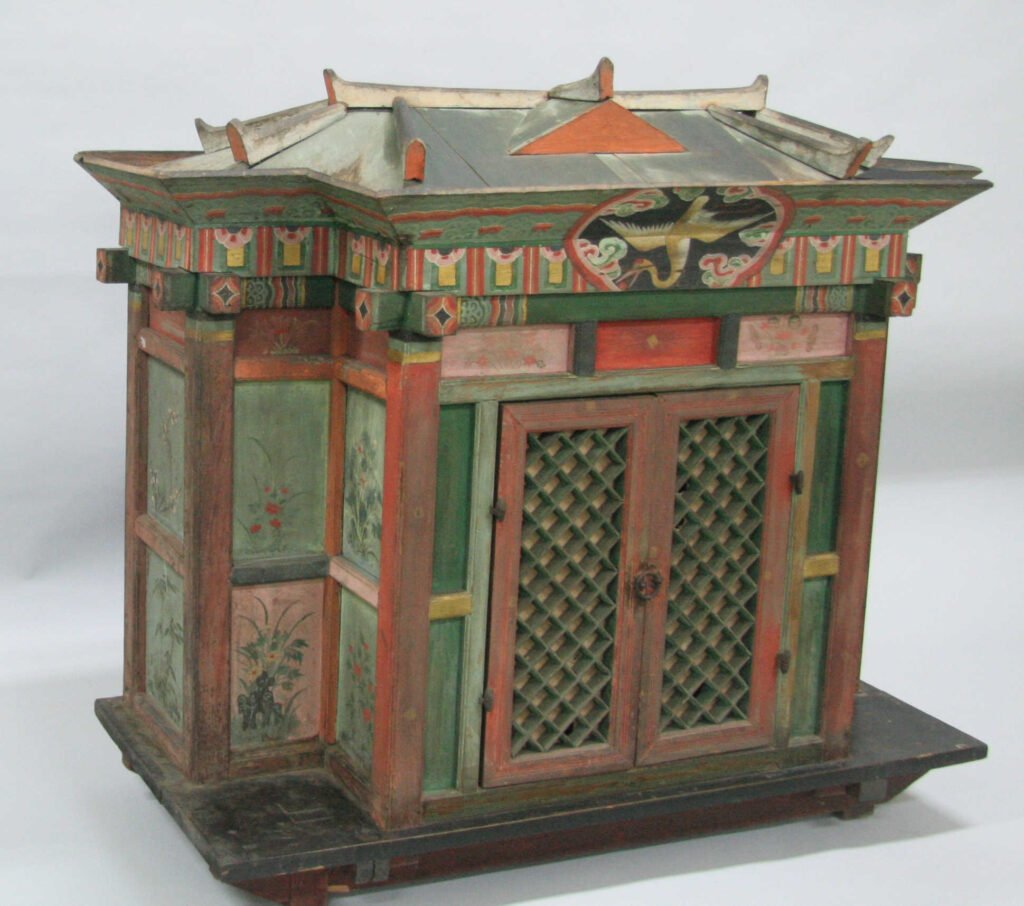
Collection: Gwangju Metropolitan City Folk Museum.
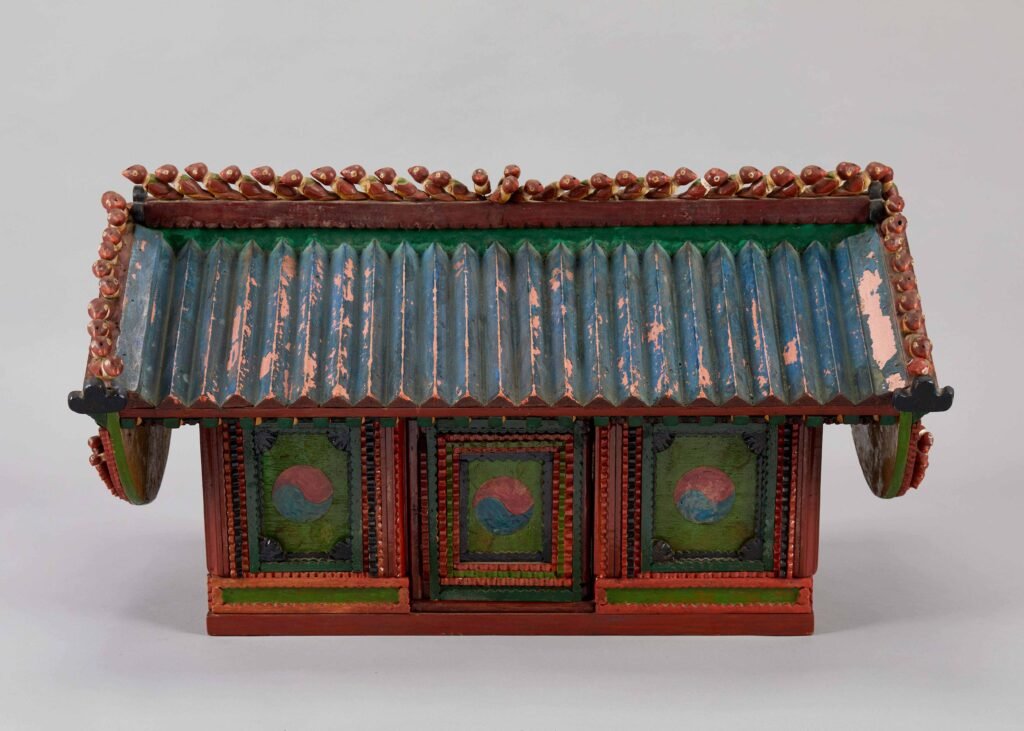
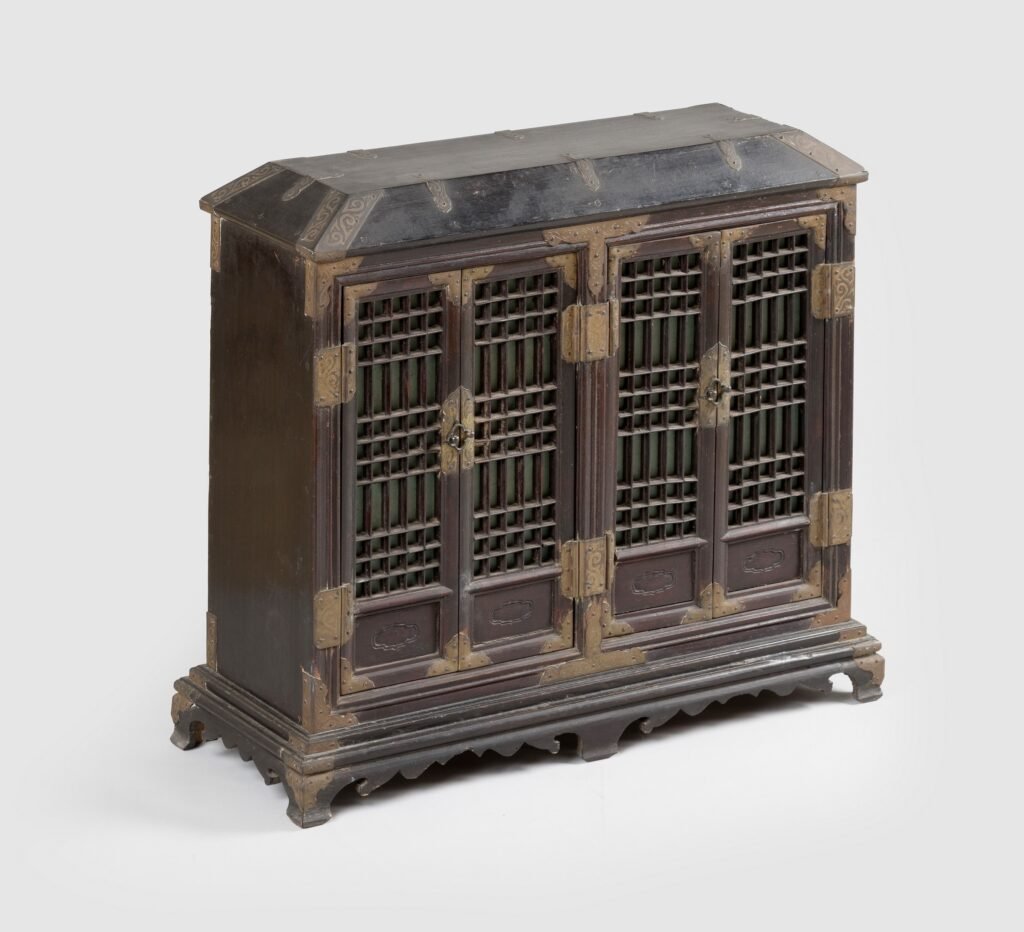
Collection: National Folk Museum, Seoul.

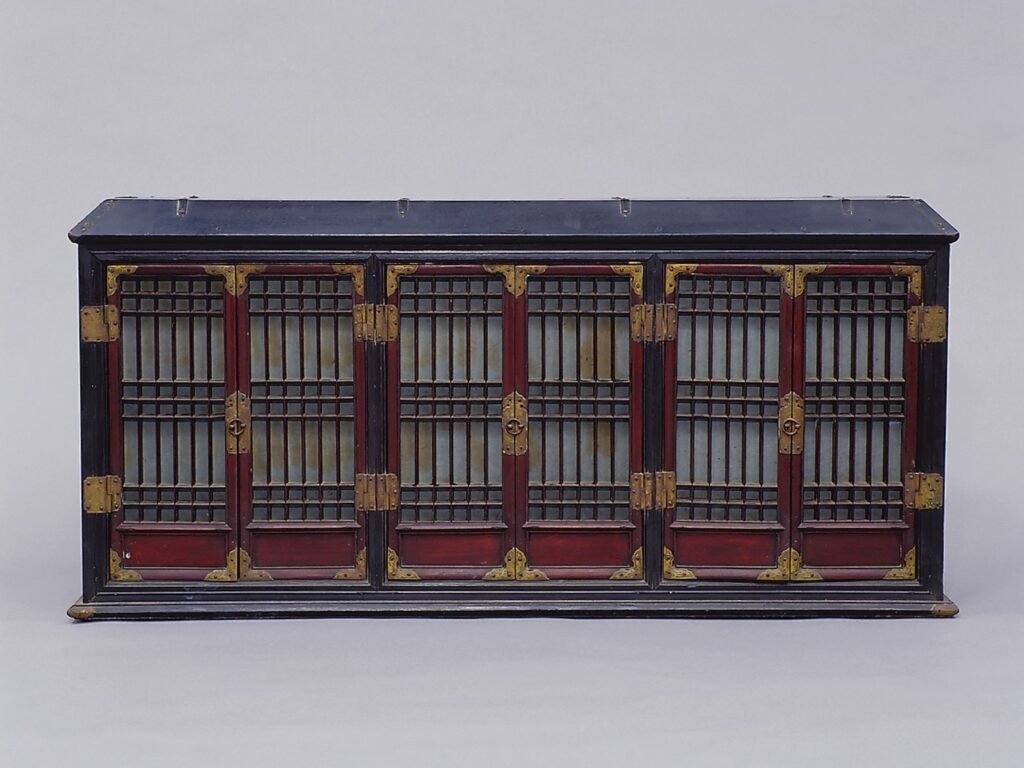
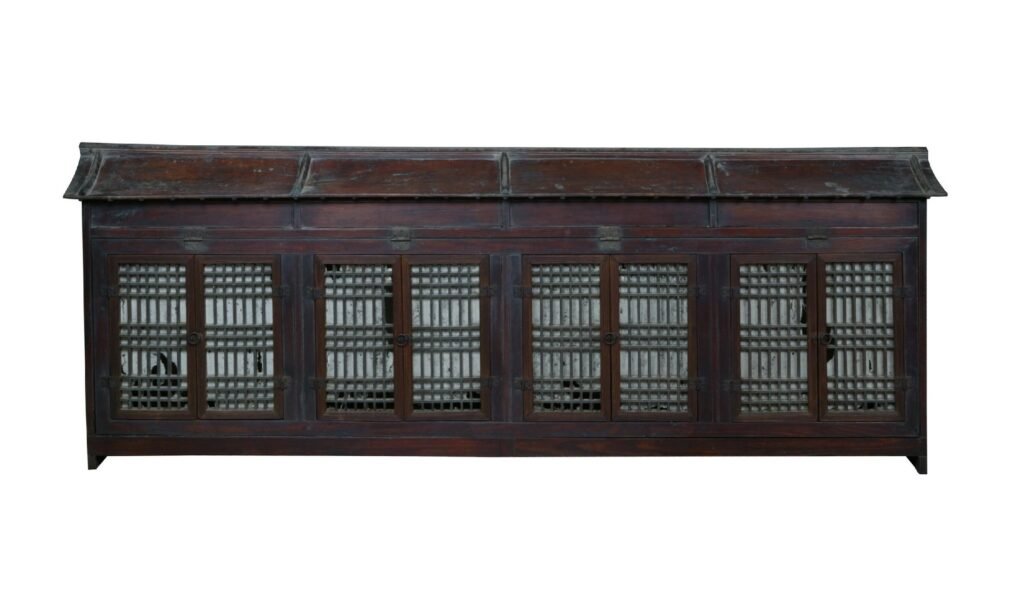
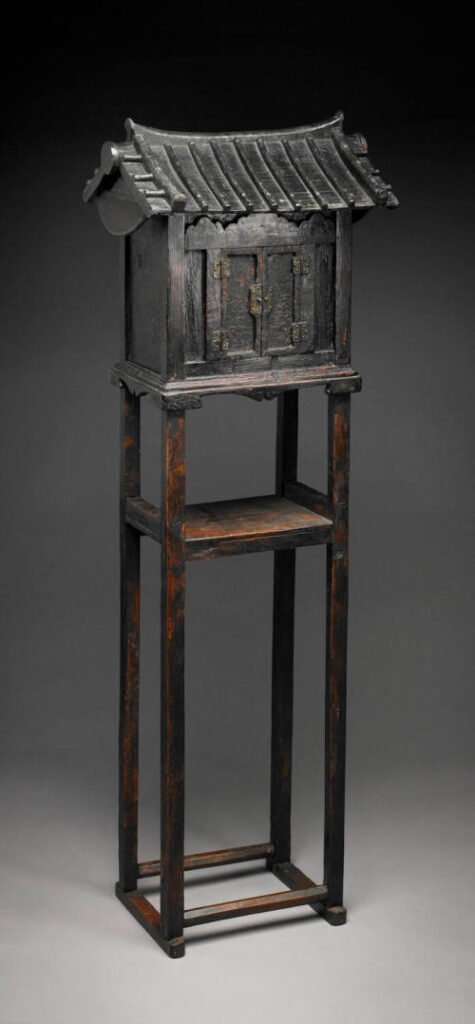
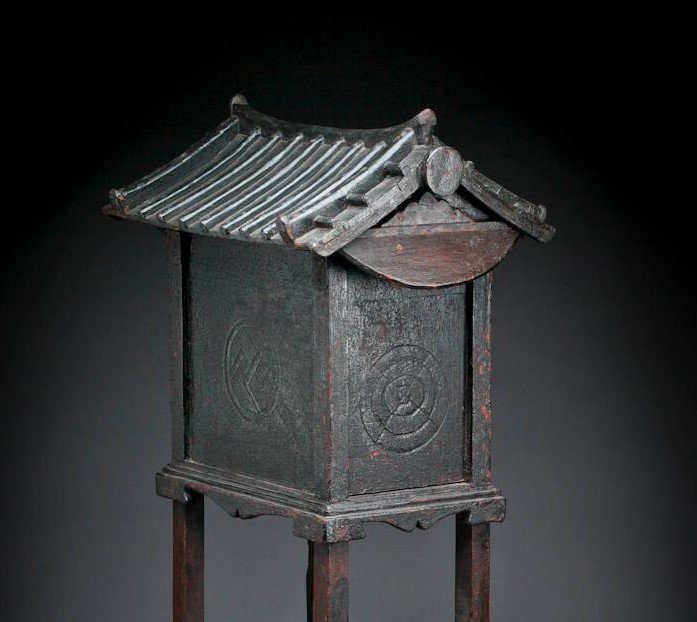
105,4 x 26,7 x 21,6cm. Roof. 15,2 x 36,8 x 27,9cm.
Collection: Harn Museum of Art. Gainesville, Florida. USA.
Each side carved with Buddhist ‘man’ symbol, Confucian ‘eumyang’ symbol, and Daoist ‘Directions’ symbol, the front set with hinged doors. Original pigment remaining, legs later replaced, roof with later hinge.
ANCESTOR ALTAR CHAIR – KYO YI or GYO UI 영좌교의 (靈座交椅)
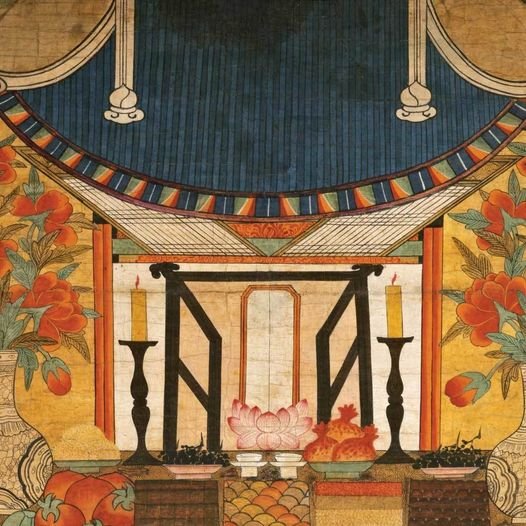
Gammoyeojaedo (Spirit House), 18th century
Artist not identified, Korea. Ink and colors on paper.
PEM, Peabody Essex Museum.
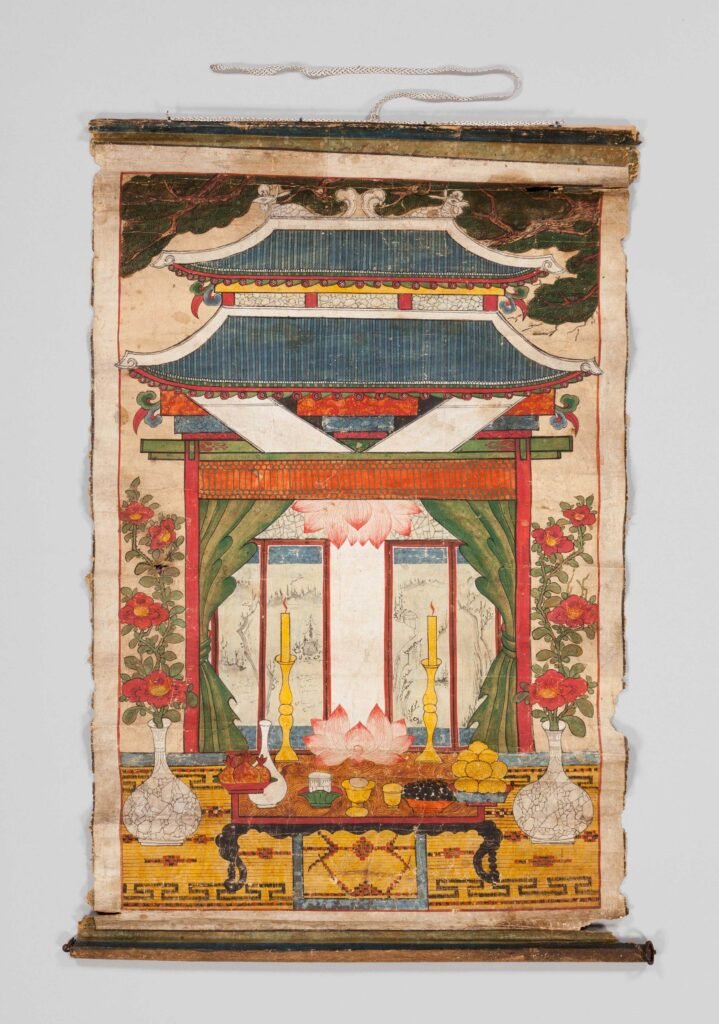
The belief in two types of souls, the spiritual and the corporeal, embodied the central concept of ancestral worship in traditional Korea.
While the corporeal soul is believed to reside in the tomb, the spiritual soul, in the spirit house, watches over their descendants.
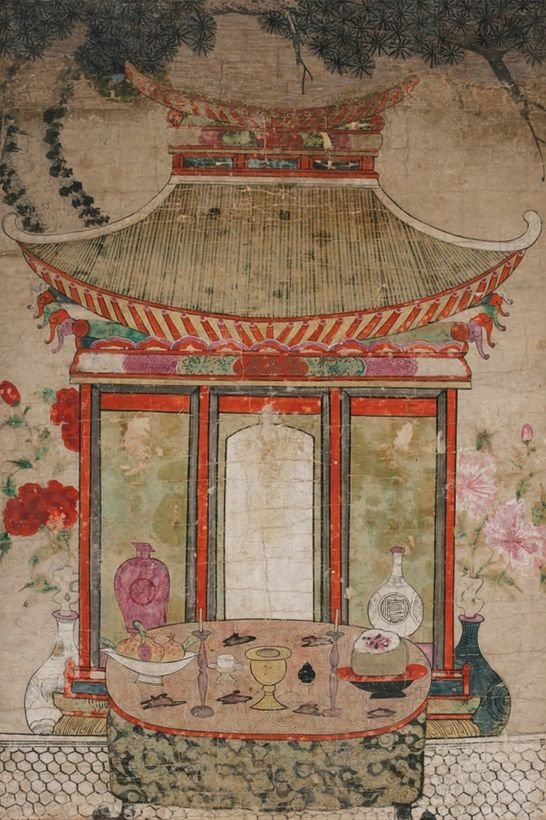
During the Joseon dynasty, many homes had a memorial shrine for preparing and conducting ancestral rites. Positioned atop a tall chair, this miniature structure, known as the spirit house, served as a temporary residence for visiting ancestral spirits.
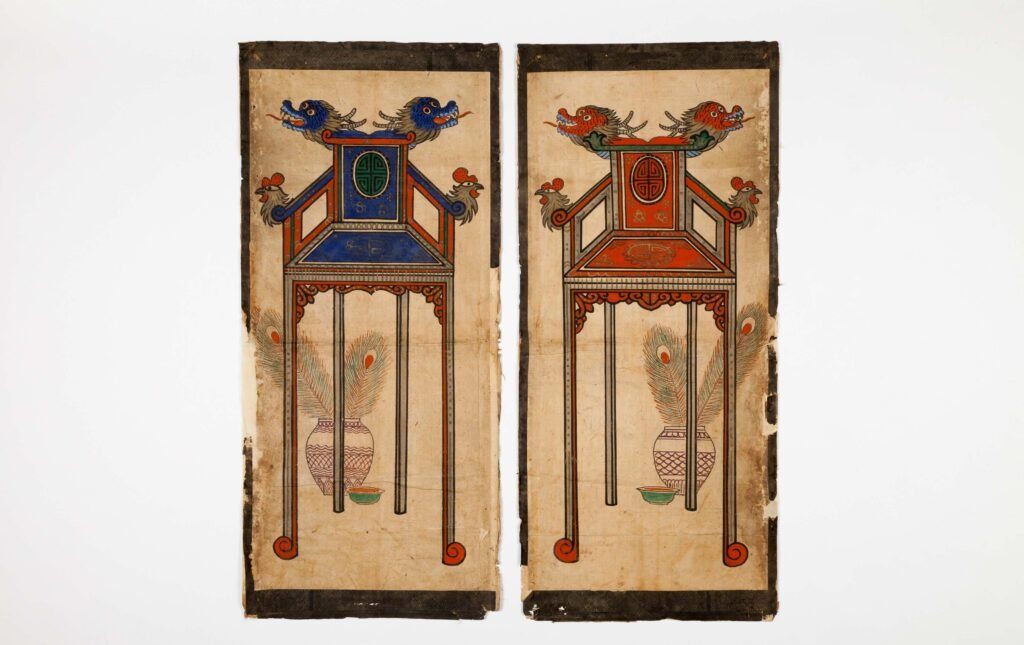
A painting depicting the ritual of attending a ancestral rite during a ancestral rite. 2-wide flat form. Paper coloring. Canvas.
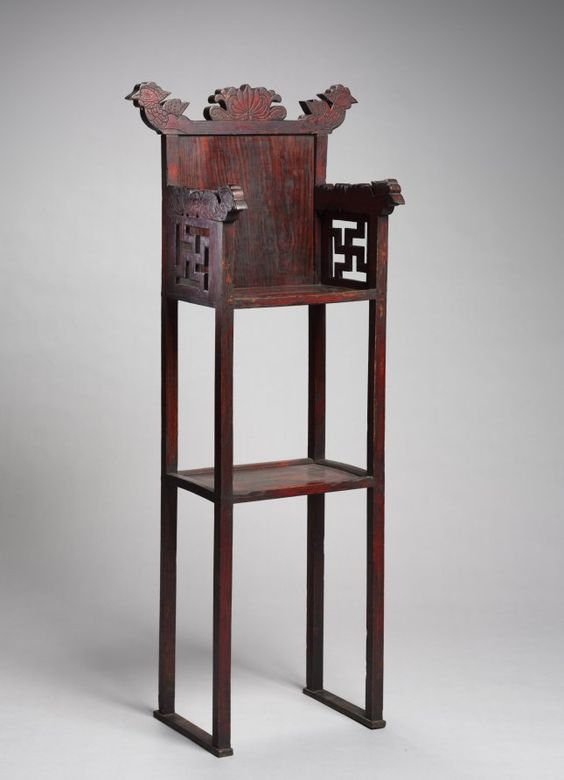
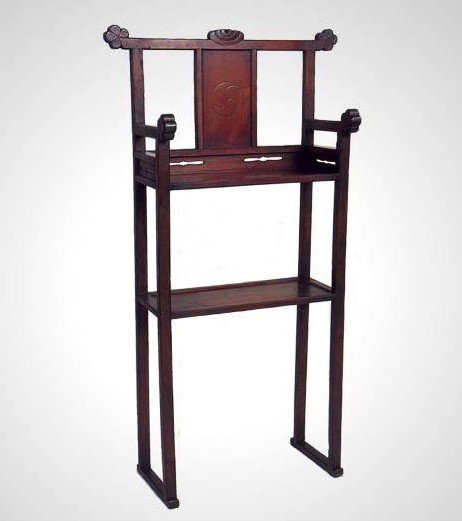
Ginkgo wood. Gyeonggi province, Korea.
This spirit altar chair was placed near the altar table at home where a member of the family had recently died. Pieces of garments were placed on it and were believed to contain the dead spirits.
Late 19th century.
H. 133cm, W. 57cm, D. 30cm.
Collection ANTIKASIA

The memorial tablet of the deceased and the incense burner were positioned on the seat. On certain occasions, a variety of delicacies such as fruits, rice, meat, and wine would be set on the table in front to honor the spiritual guests.
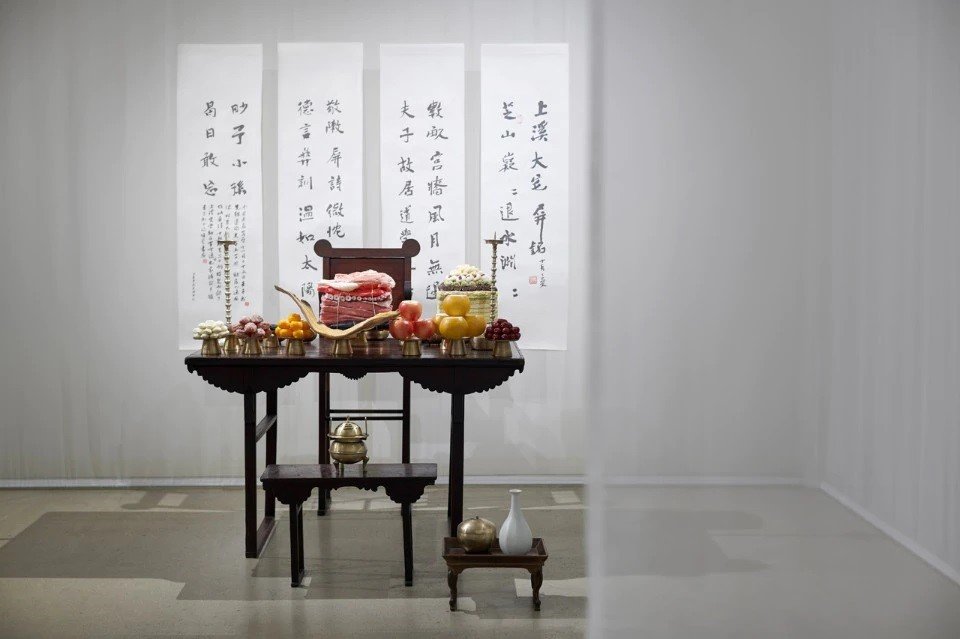
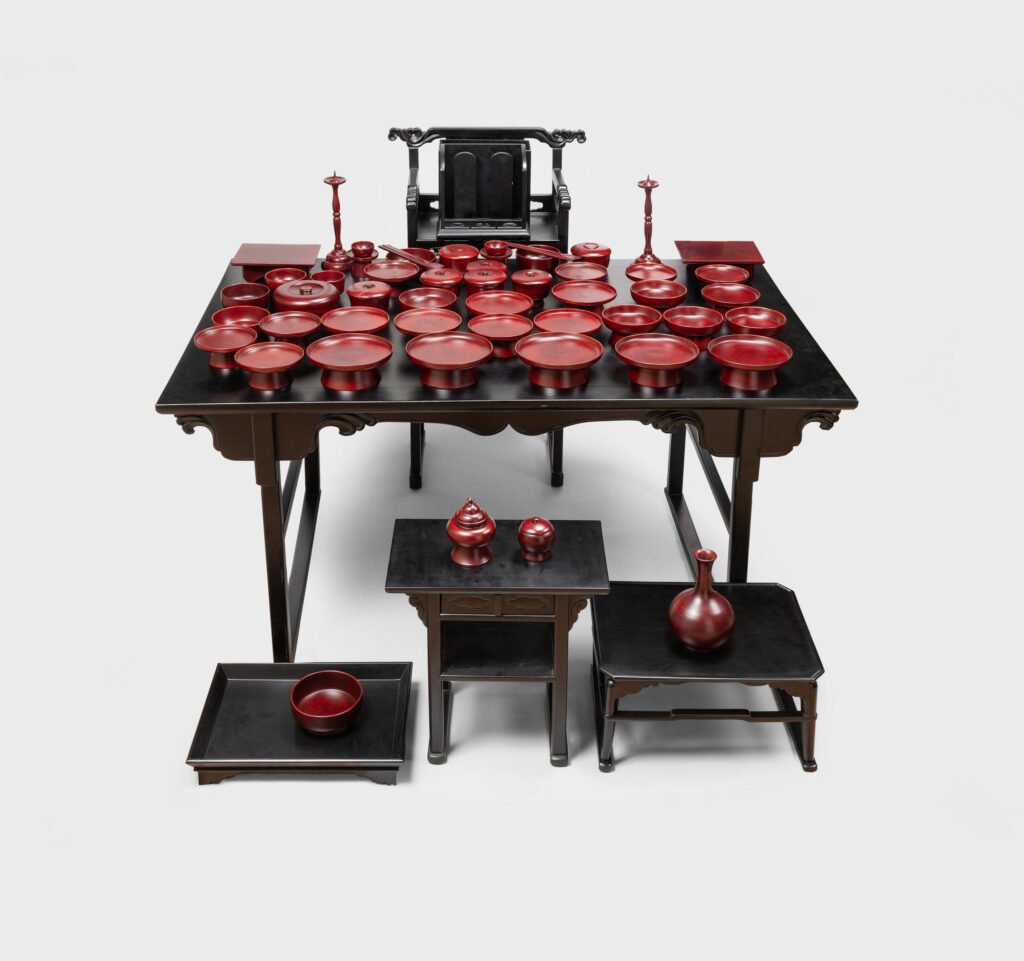
During the Joseon dynasty (1392–1910), Neo-Confucianism served as the dominant ideology. People conducted rituals on the birth and death anniversaries of ancestors up to five generations back, as well as on major holidays such as the Lunar New Year and Chuseok (Harvest Moon Festival). Court ancestral rites formed the foundation of Joseon political life and were carried out on a grand scale, including musical and dance performances. A prominent feature throughout these ceremonies was a table laden with food and drink offerings, presented on jegi, or ritual objects.
There were many ancestor worship ceremonies. We will mention one known as “Jesa“.
“Jesa” (제사) in Korean was and still is a commonly practiced ceremony, typically held on the anniversary of the ancestor’s death.
Jesa is a ceremony held to commemorate one’s departed ancestors and express gratitude to them. The ceremony is performed with utmost sincerity, as if the departed ancestor were still alive. It is an occasion to seek blessings from one’s ancestors and to instill filial affection and veneration in one’s descendants.
These rituals involve paying homage and offering sacrifices to ancestors, spirits, and deities. Rooted in the belief that the spirits of ancestors continue to influence the living, Jesa serves as a means to maintain a connection with the past and seek blessings for the present and future.
The Sadang (shrine) or Gamsil (family shrine) is where ancestral tablets are placed and worshipped.
The Object of Jesa: The primary object of Jesa is usually an ancestral tablet. However, if an ancestral tablet is unavailable, it can be substituted with a paper tablet or a portrait or picture of the deceased.
The jesa table, filled with food, is central to the ceremony because it symbolizes the ancestors visiting to partake in the prepared food. Various traditional dishes are placed on the table in a specific order.
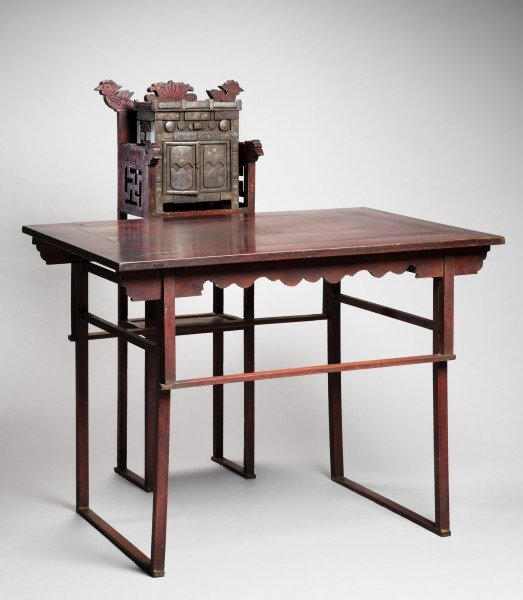


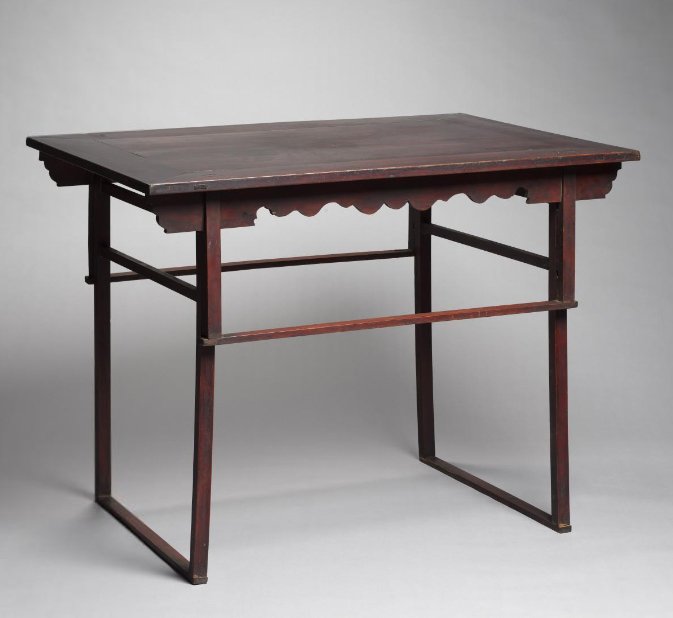
철제 은입사 감실 (鐵製銀入絲龕室)
Late 1800s. Iron inlaid with silver and copper decoration
H. 35cm, W. 30cm, D. 14 cm.
TOP. Folding Table (Che-Sang) for Memorial Service
제사상 (祭床). 1900.
H. 97,5cm, W. 116cm, D. 82,5 cm. Both items Collection of the Cleveland Museum of Art.
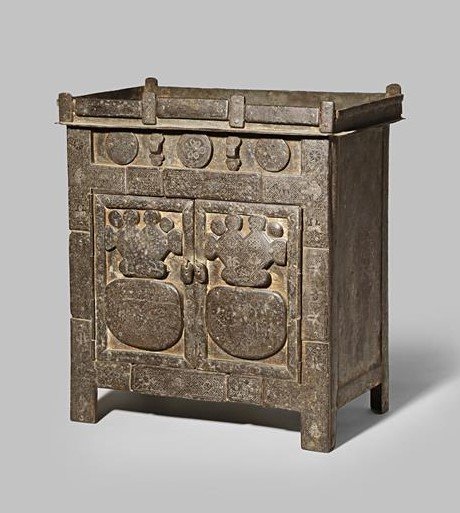
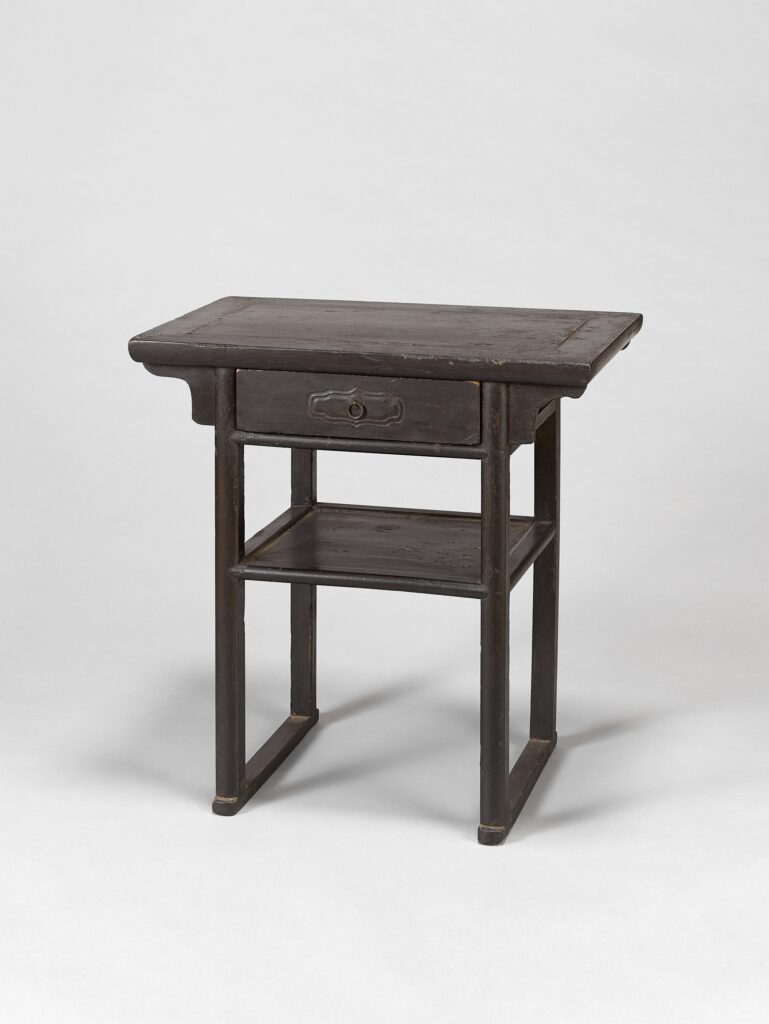
It was placed in front of the ancestral rites table when enshrining divine tablets, ancestral tablets, and portraits.
Collection: National Museum of Korea.
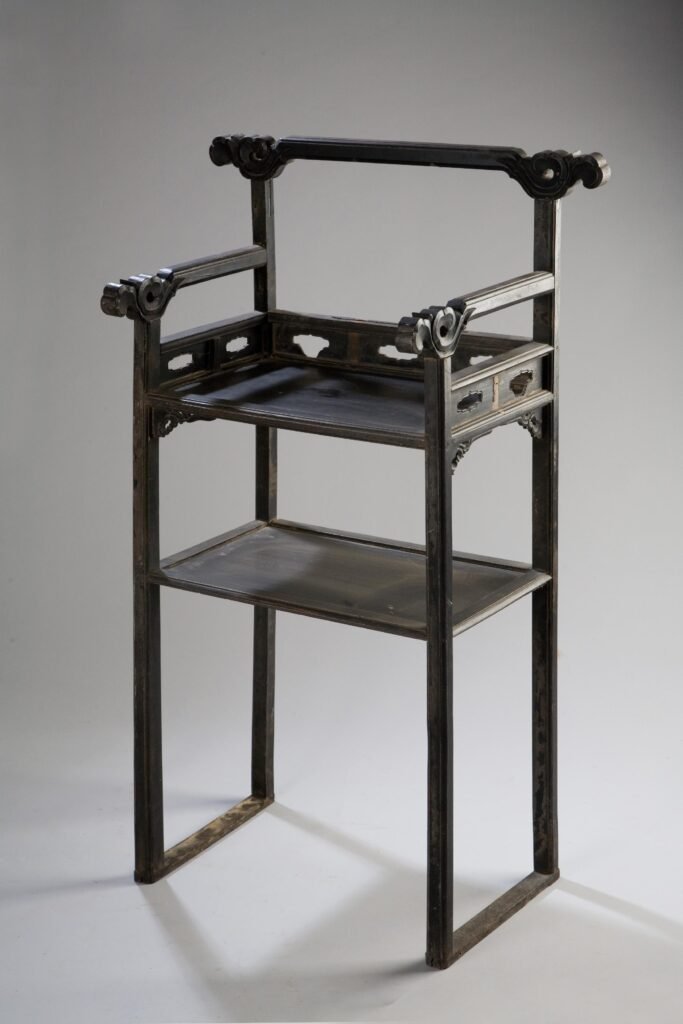
H. 114,6cm W. 72,5cm, D. 41,5cm.
Collection: Namyangju History Museum, Korea.

Furniture for storing ritual vessels or setting out offerings.
제기함 H. 92cm, W. 103,5cm, D. 45cm.
Collection: National Folk Museum, Seoul.
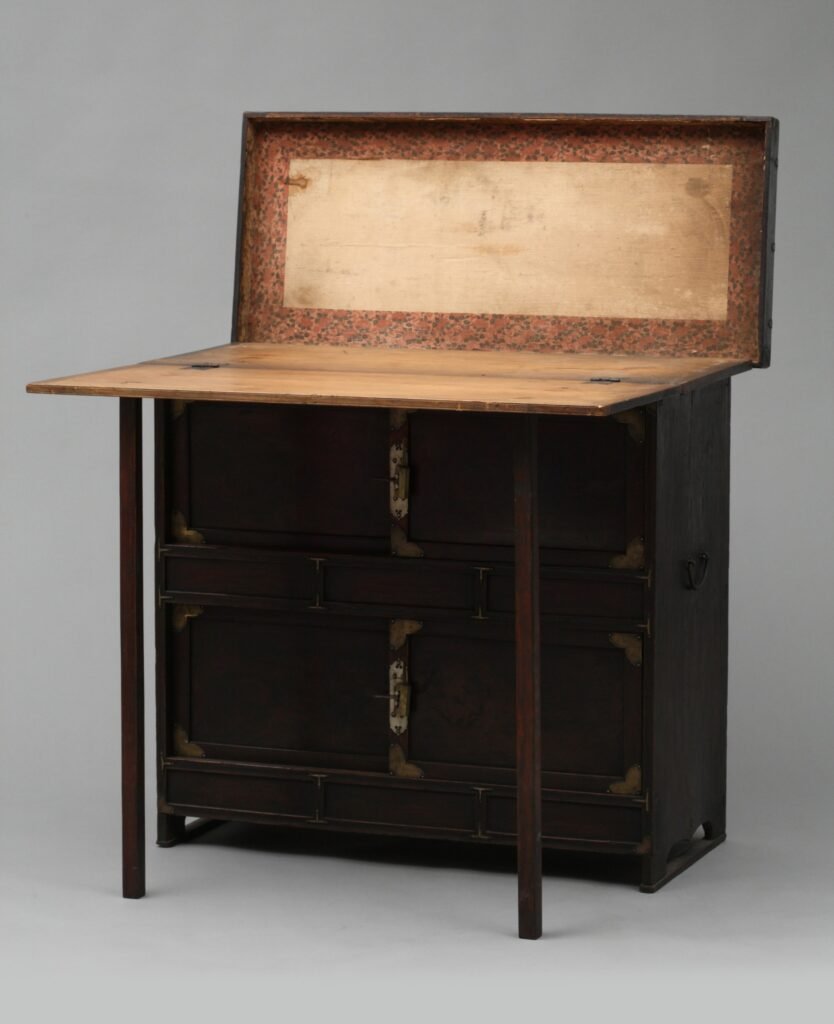

Very unusual ancestor shrine on low legs. This item was placed on top of a furniture or altar table. Intricate back design.
Mid 19th century. H. 46cm, W. 46cm, D. 36cm. Collection ANTIKASIA
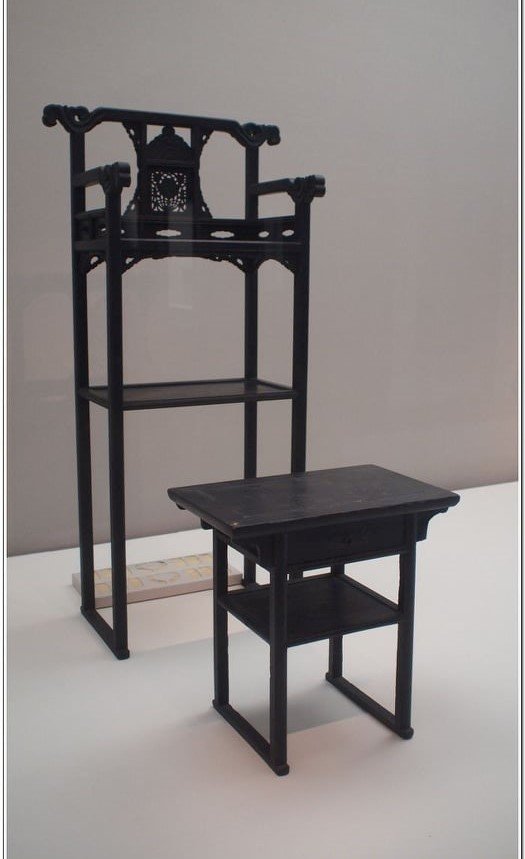

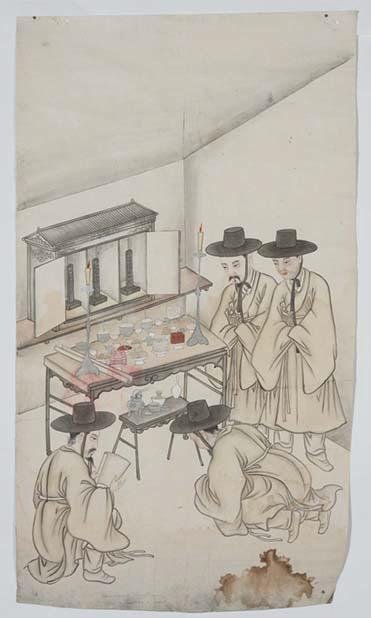
1885 – 1910. Ink and color. Korea.
120cm x 68cm. Royal Ontario Museum, Canada.
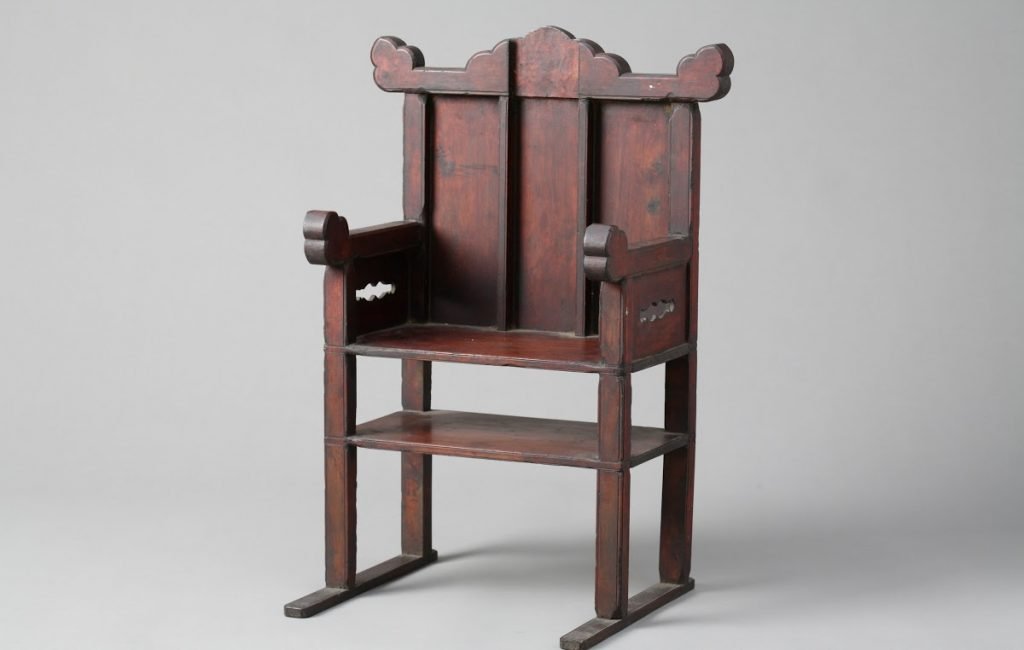
H. 62,5cm, W. 43,5cm, D. 32,4cm.
Collection of the National Folk Museum of Korea.
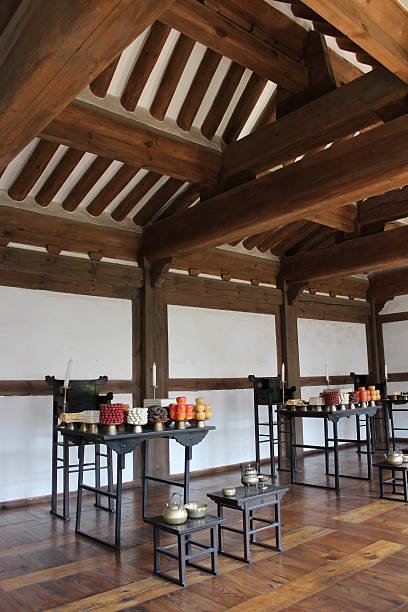
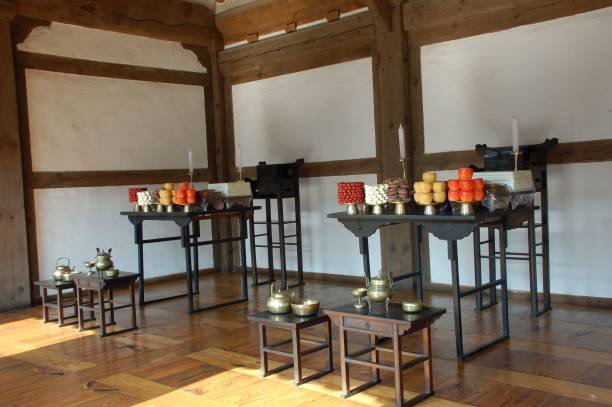
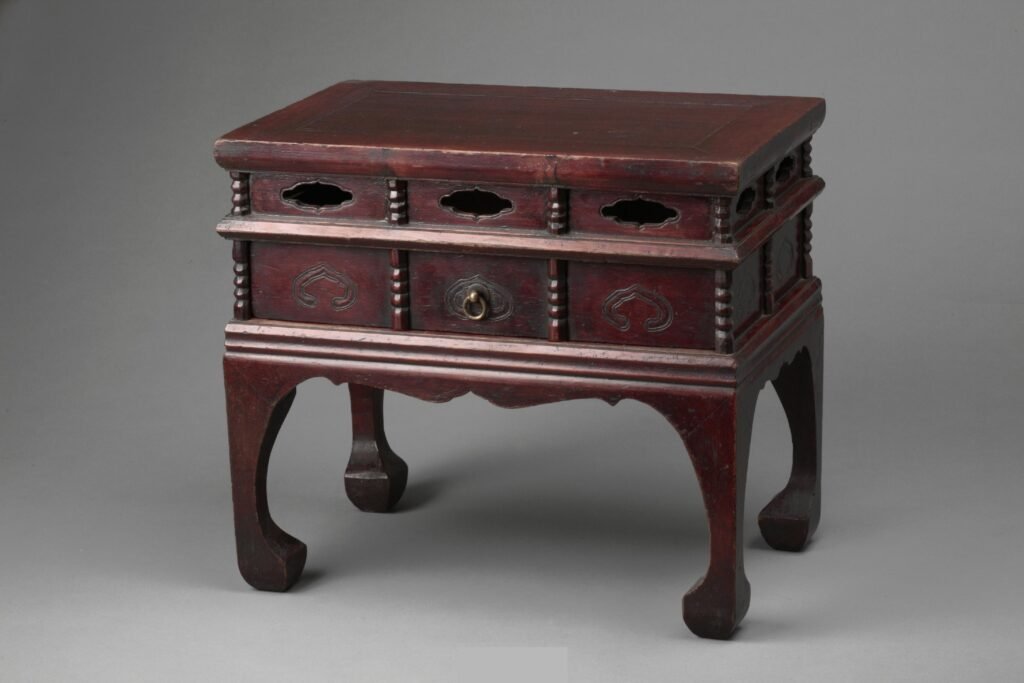
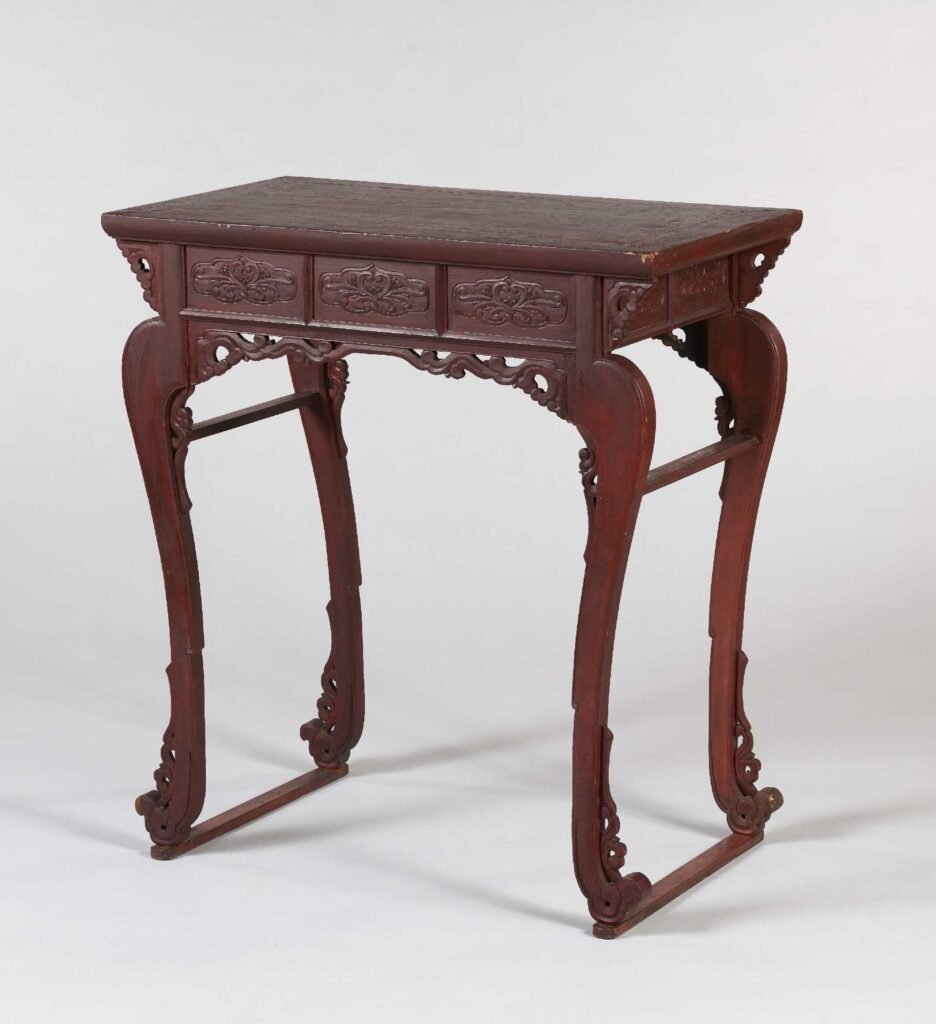
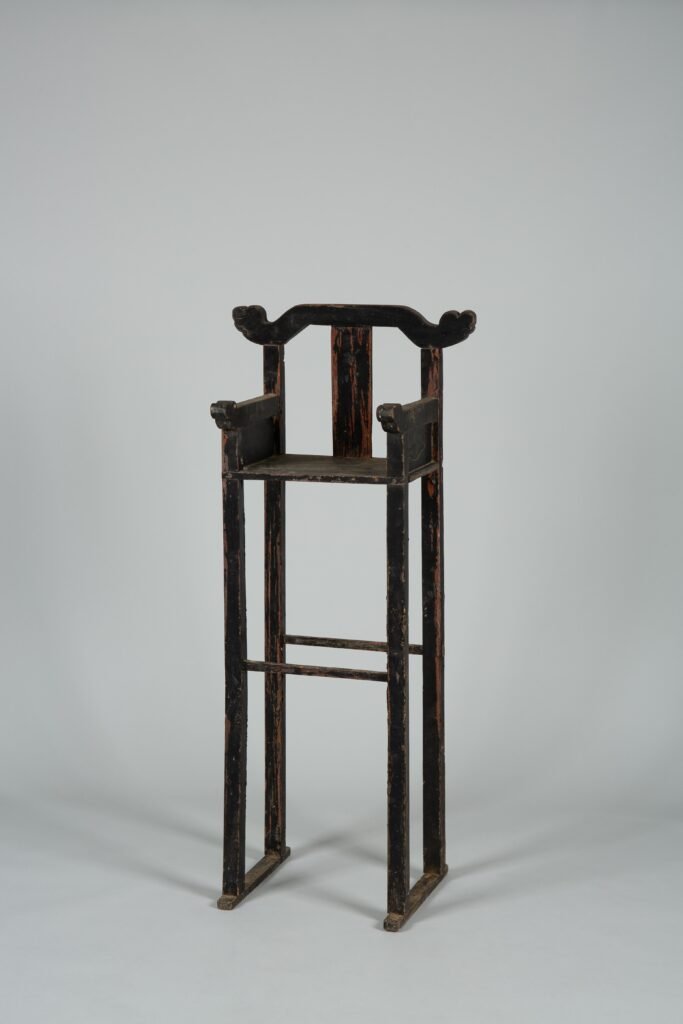
H. 127cm, W. 54cm, D. 36,8cm.
Collection: Sangju Museum, Korea.
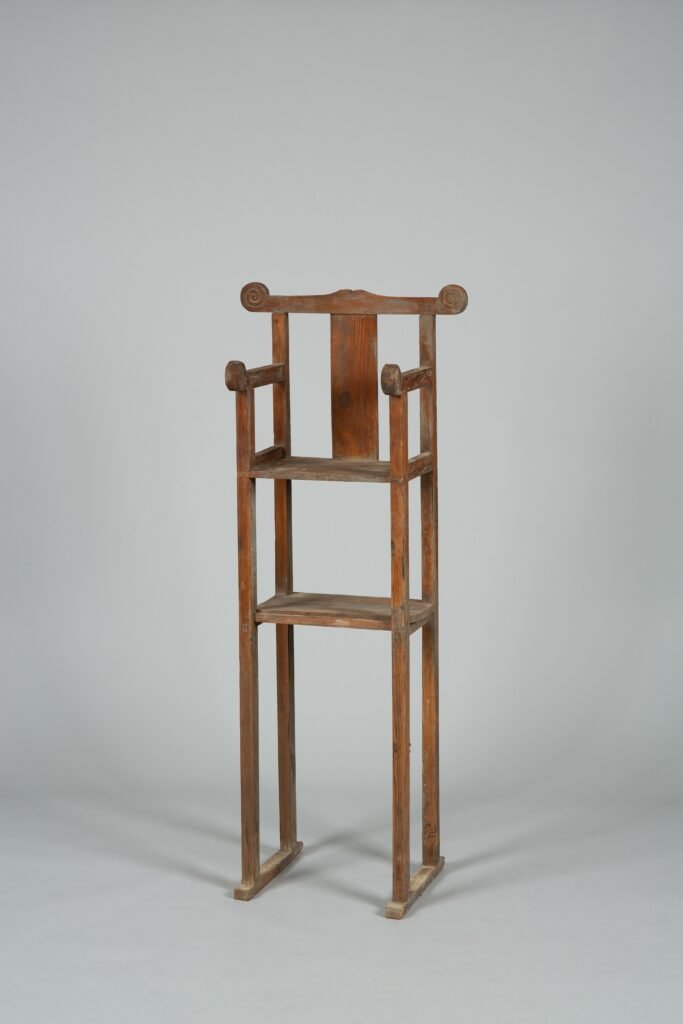
H. 128,8cm, W. 50,5cm, D. 32,5cm.
Collection: Sangju Museum, Korea.

H. 119cm, W. 41cm, D. 25,5cm.
Collection: National Folk Museum, Seoul.
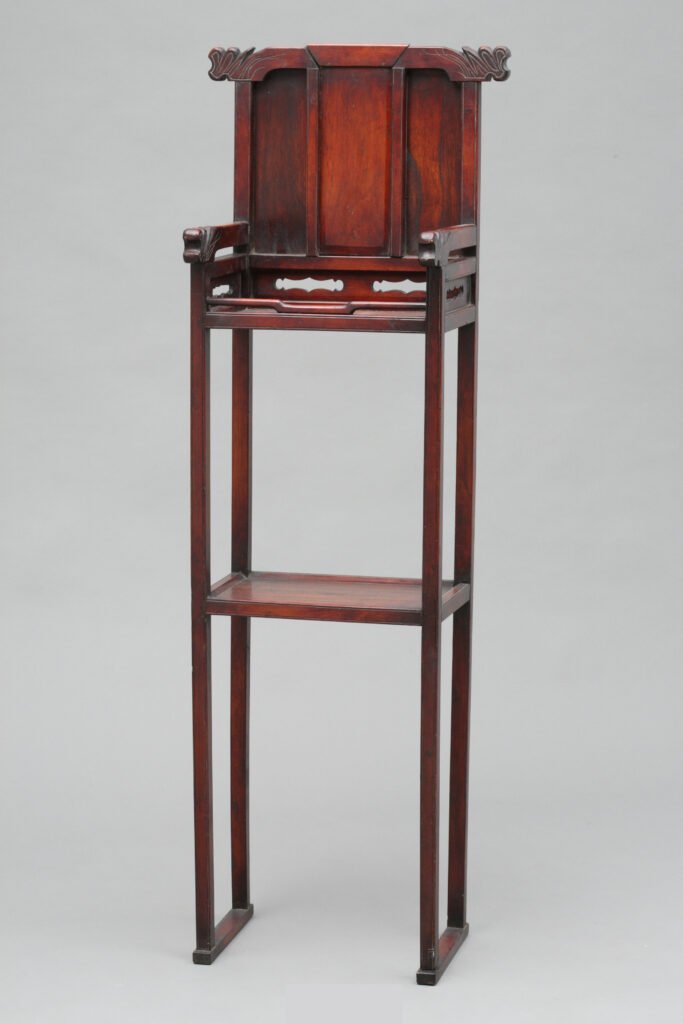
H. 148cm, W. 50cm, D. 31,5cm. Collection: National Folk Museum.
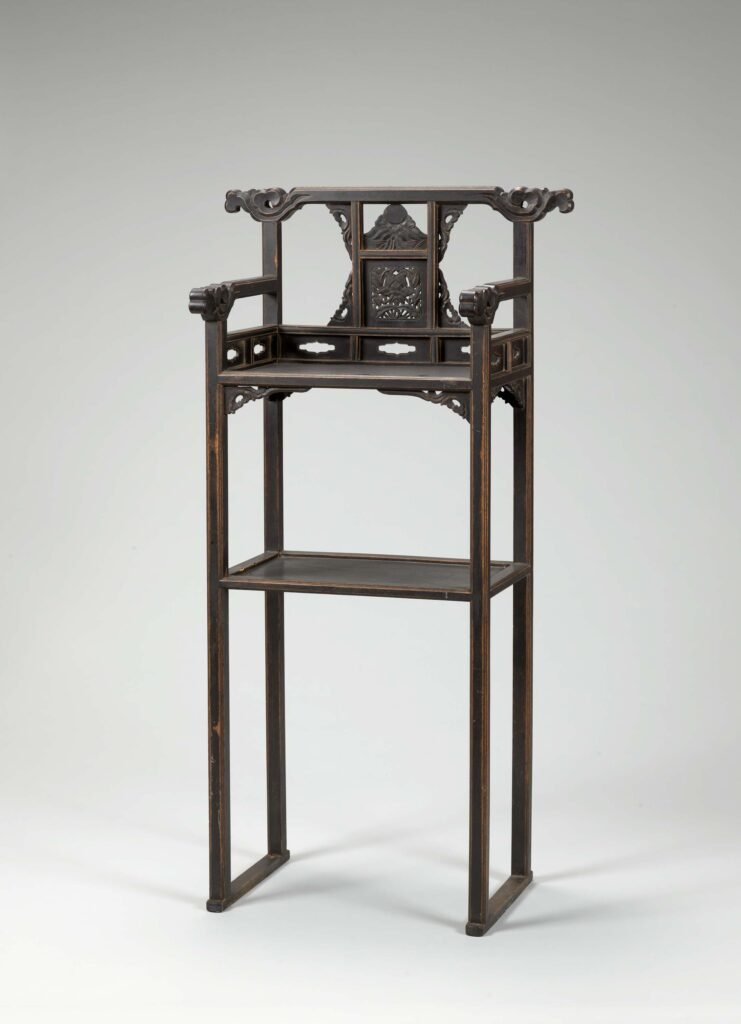

H. 123,5cm, 63,2×37,3cm. Collection: National Museum of Korea.
This type of chair was traditionally used to hold the mortuary tablet during sacrificial offering rituals or funerals. The black lacquered chair features inscriptions of mountains, clouds, and a rising sun on its top rail, along with openwork grass and flower designs on its lower part. Each corner of the back support of the chair is intricately crafted to resemble scrolling vines. Additionally, both sides and the rear part of the rack, where the mortuary tablet used to be placed, are adorned with two and three holes, resembling elephant eyes.

Private collection, Korea.
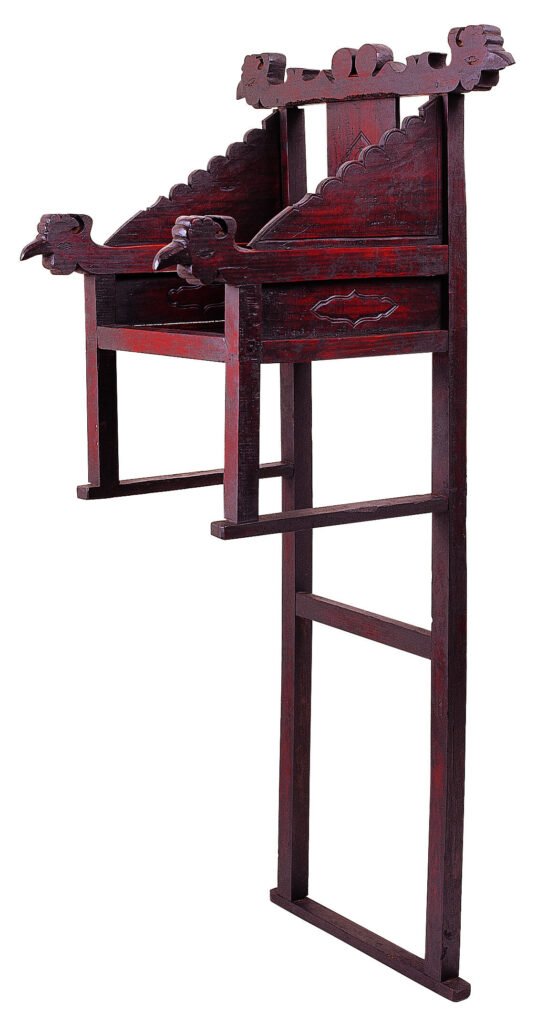
Private collection, Korea.
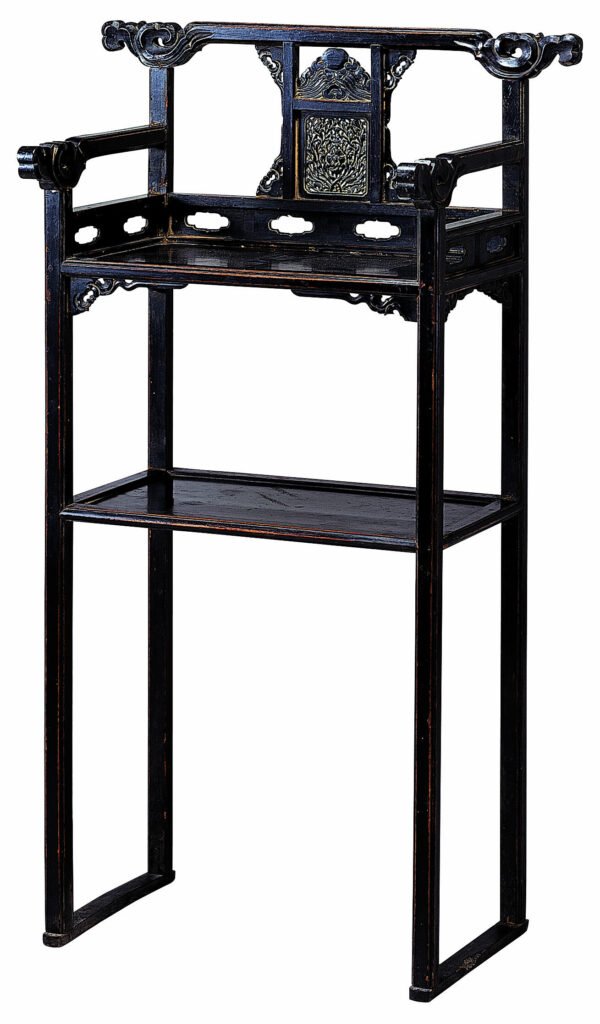
Private collection, Korea.
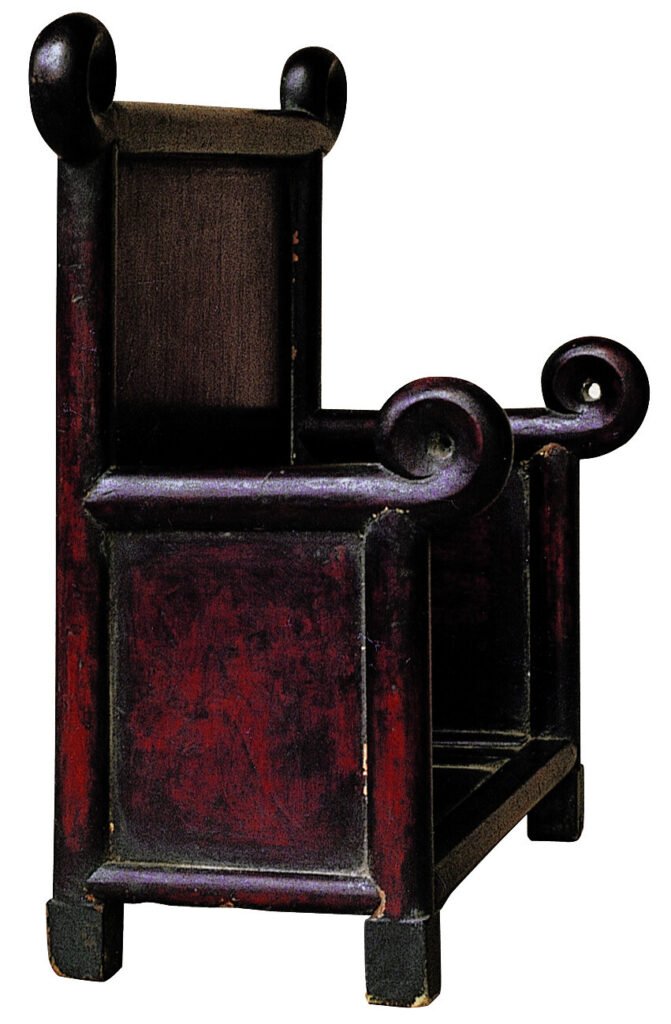
Private collection, Korea.
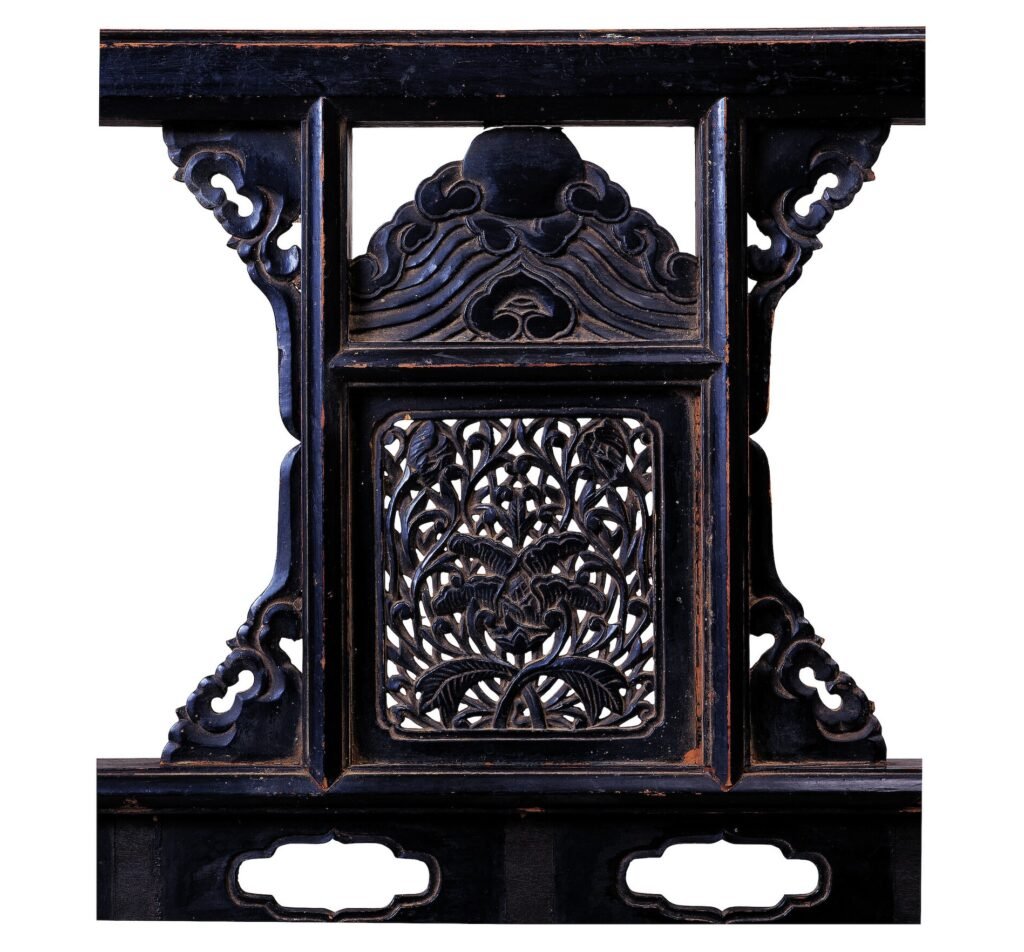
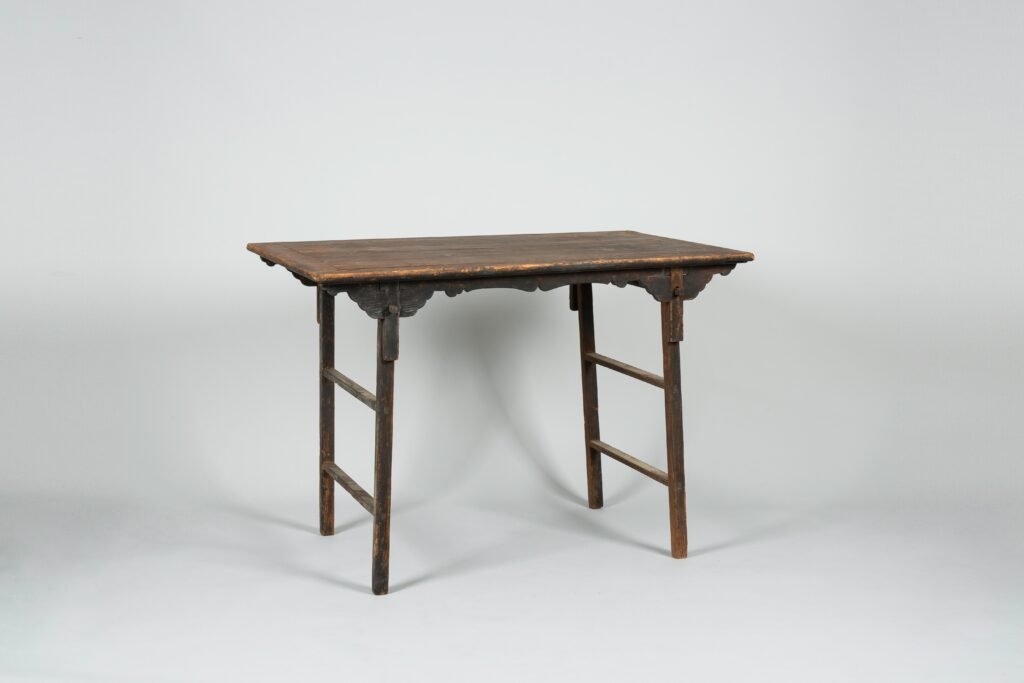
H. 82cm, W. 117cm, D. 77,5cm. Collection: Sangju Museum, Korea.
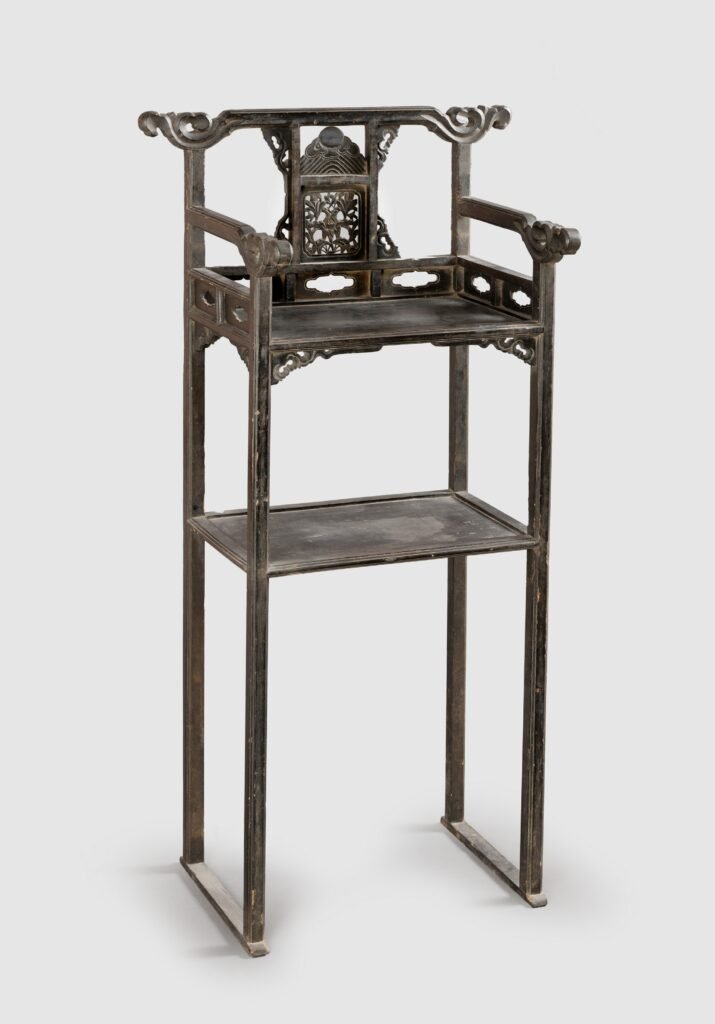
H. 130cm, W. 48cm, D. 30,5cm.
Collection: National Folk Museum, Seoul, Korea.


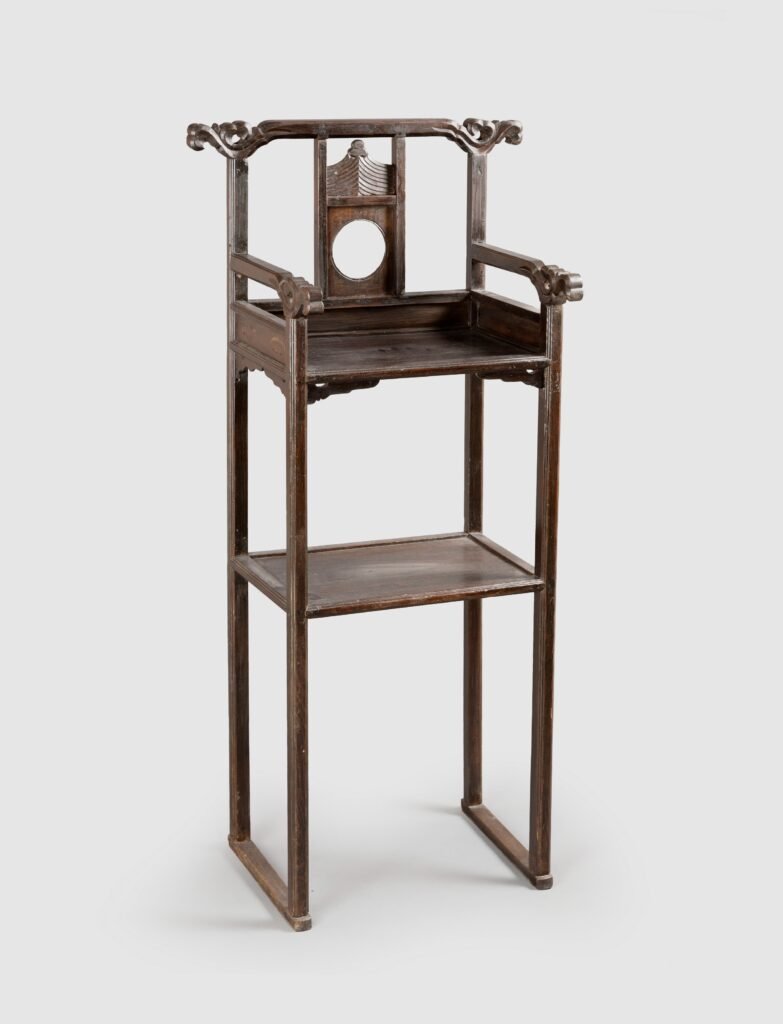
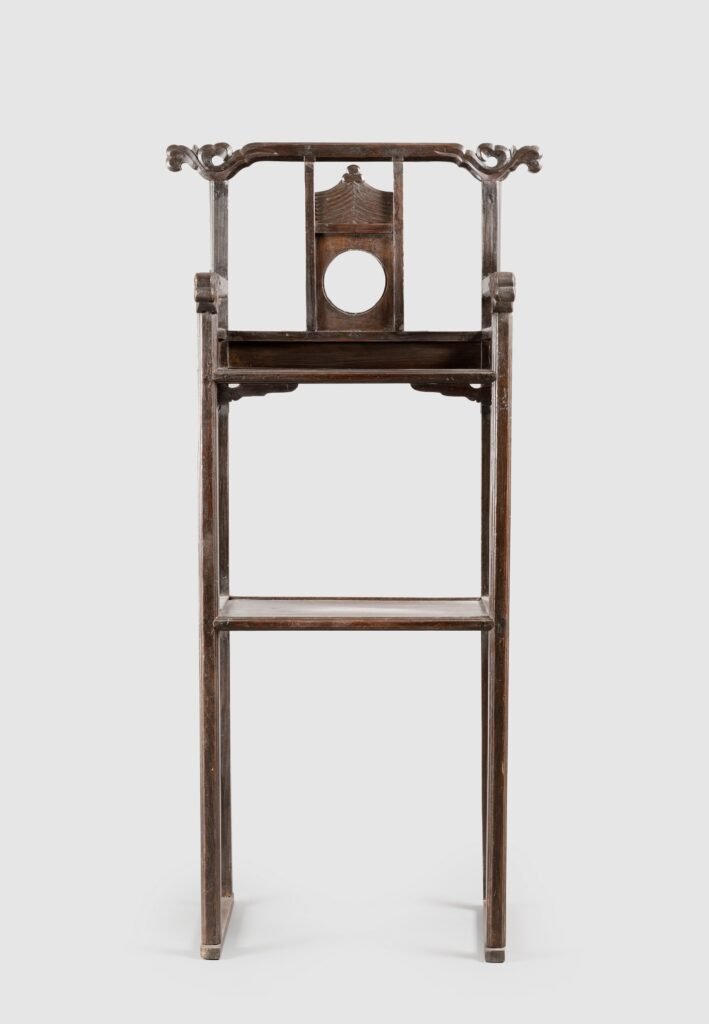
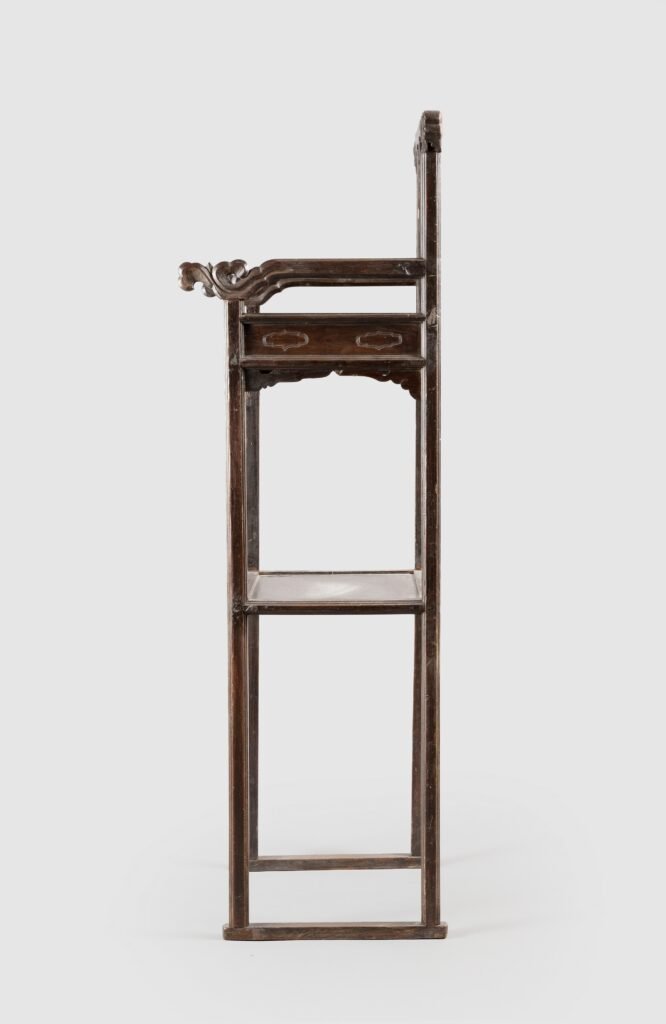

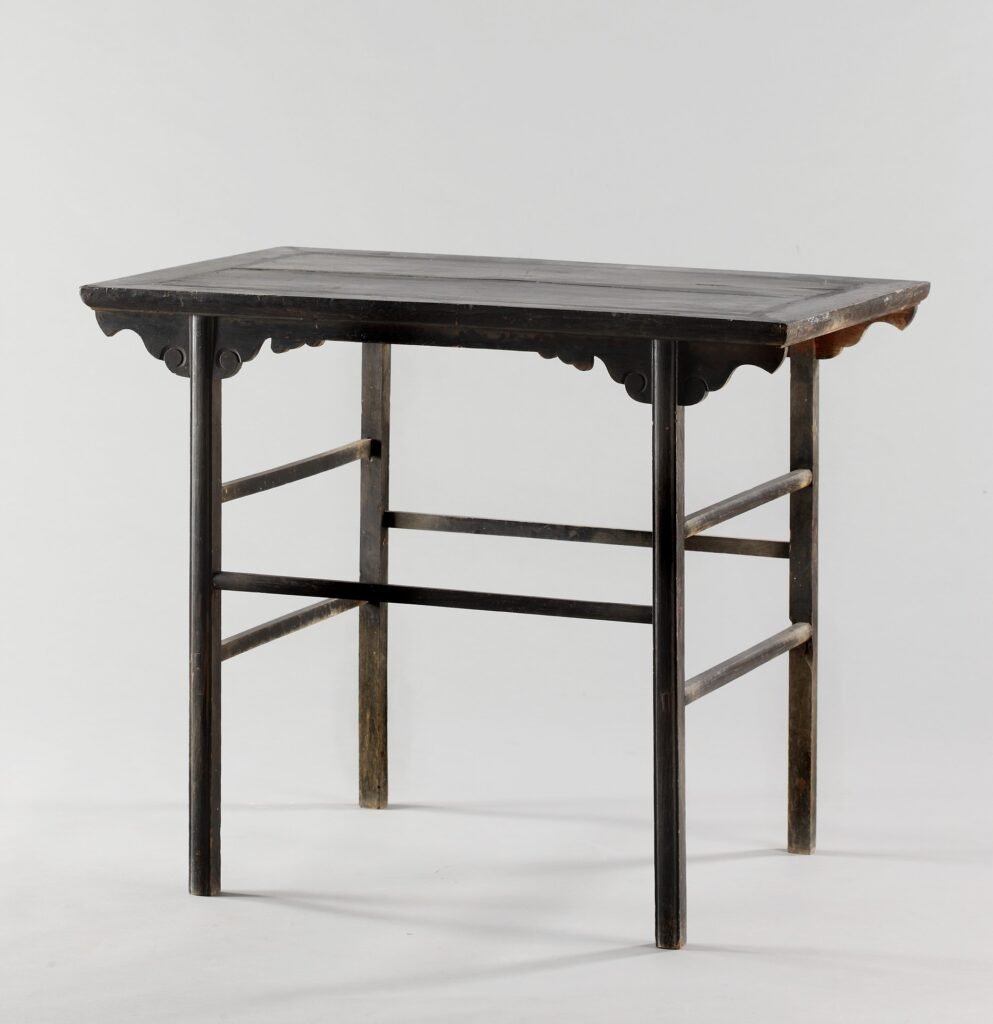
H. 87cm, W. 107cm, D. 68,5cm. Collection: National Folk Museum, Seoul.
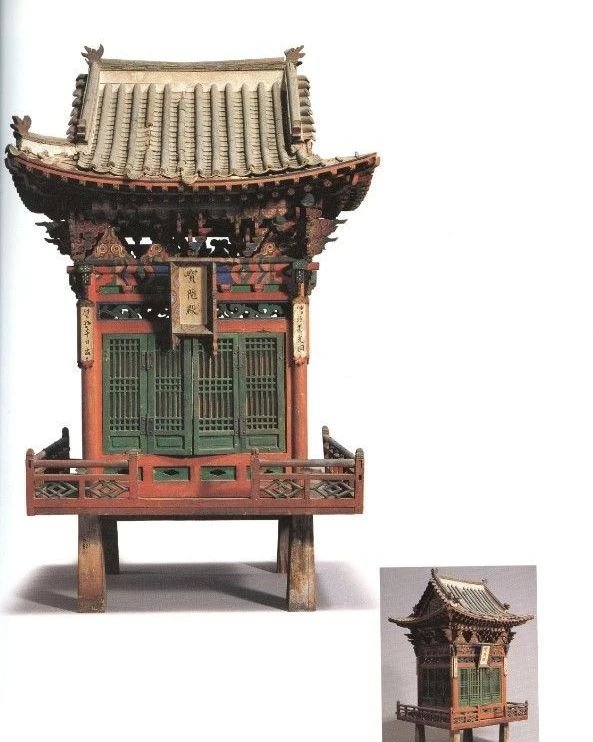
Niche for Buddha image with hanging board. Painted wood.
H. 86cm, W. 62,5cm.
Late Joseon dynasty.
“Kokdu” or 목우(木偶)
Amongst the accessories used in burial ceremonies were little wooden dolls called “Kokdu” – 꼭두 or “Mok-woo”, “Mok-sang”, “Mook-woo-in” – 목우(木偶)
Dolls used to alleviate the deceased’s regrets for unfulfilled desires in life is referred to as a kkokdu. Originally employed as a surrogate for performing tasks, its usage expanded to include bier decoration, leading to a variety of types.
The human kokdu adorning the bier typically portray a child, a sage, a scholar, or a clown. Similar to a child making offerings to Buddha, it wholeheartedly serves the departed and engages in playful activities to alleviate any boredom or fear during the journey, such as dancing and performing tricks. In this context, Kokdu demonstrates that death is not solely viewed as a source of sadness but as a desire to guide the deceased to a better place.

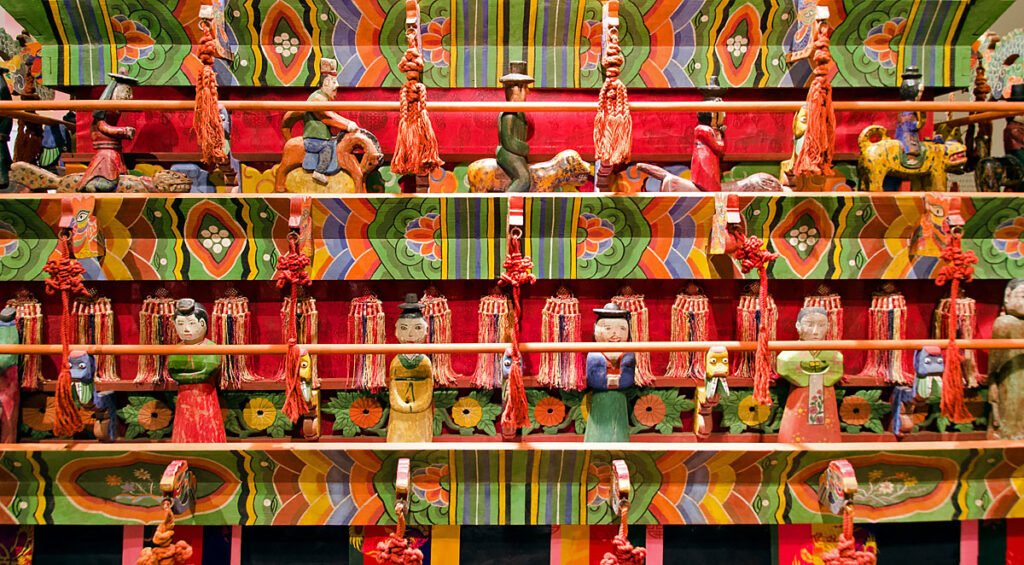
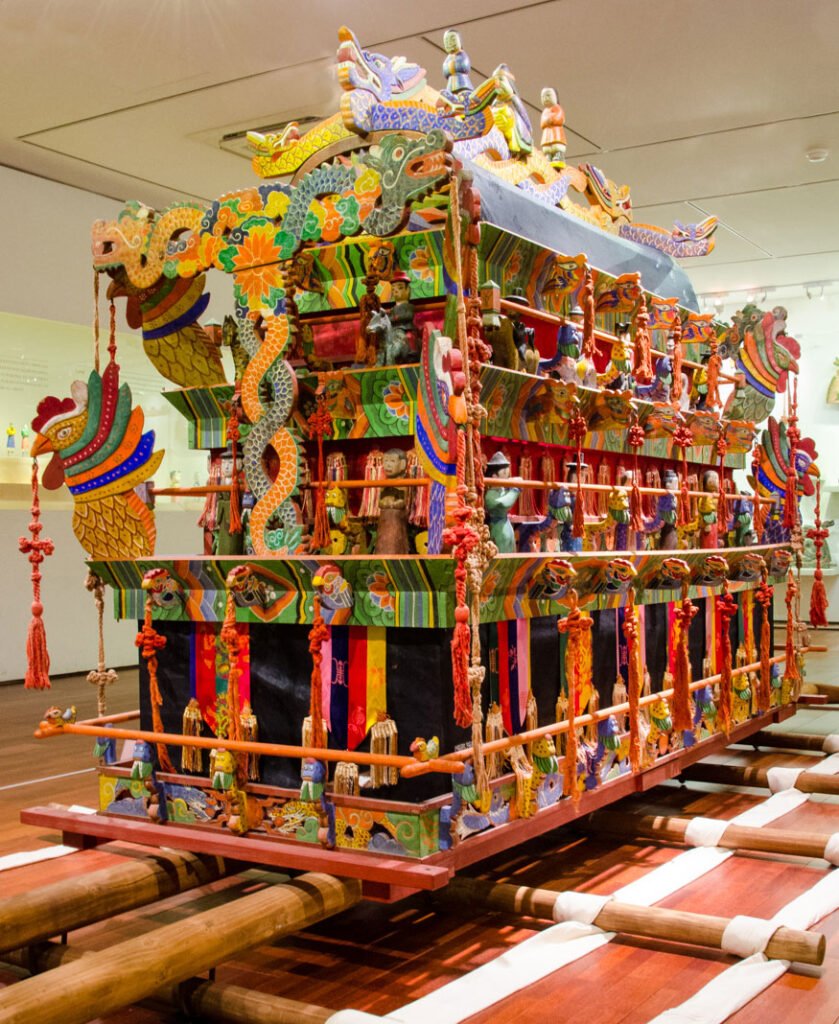
Here are some samples from the Collection of the National Folk Museum in Seoul.

